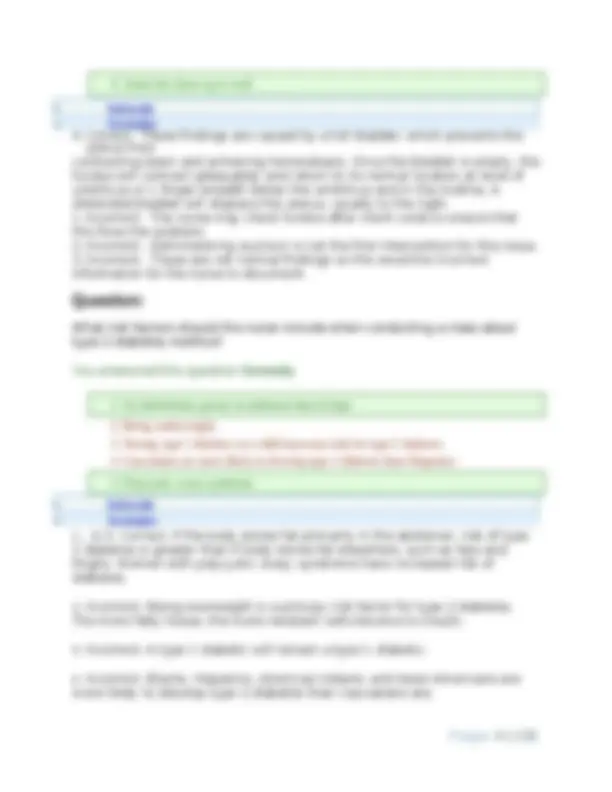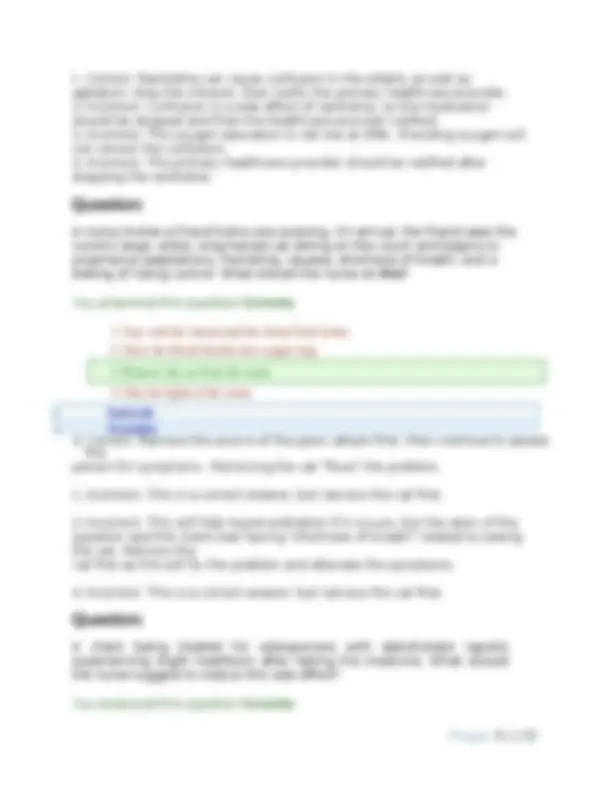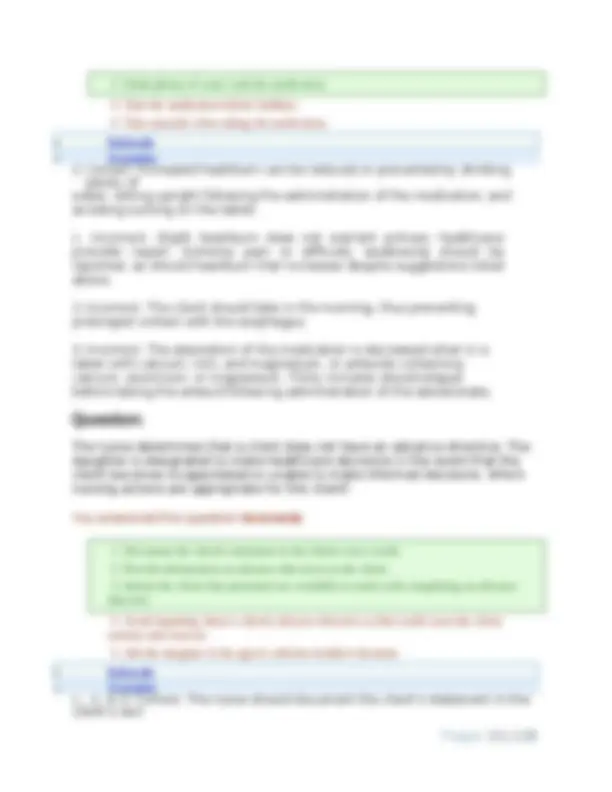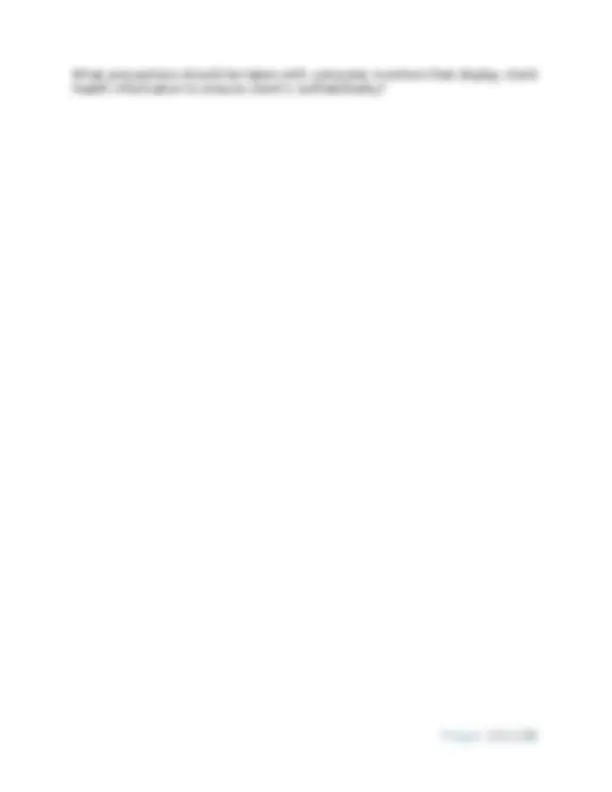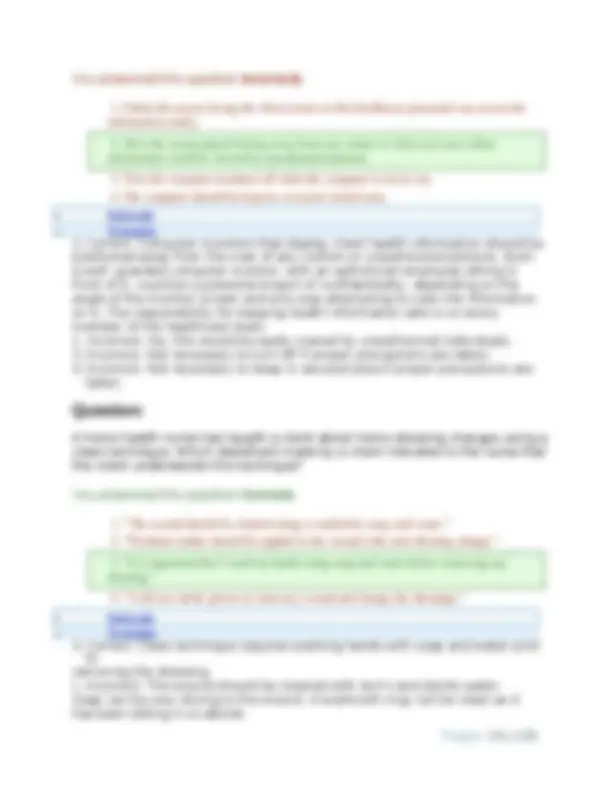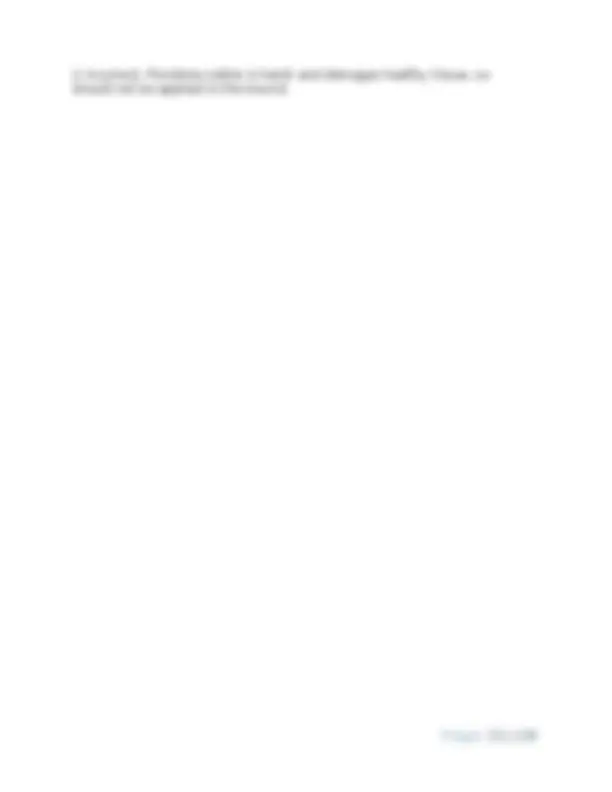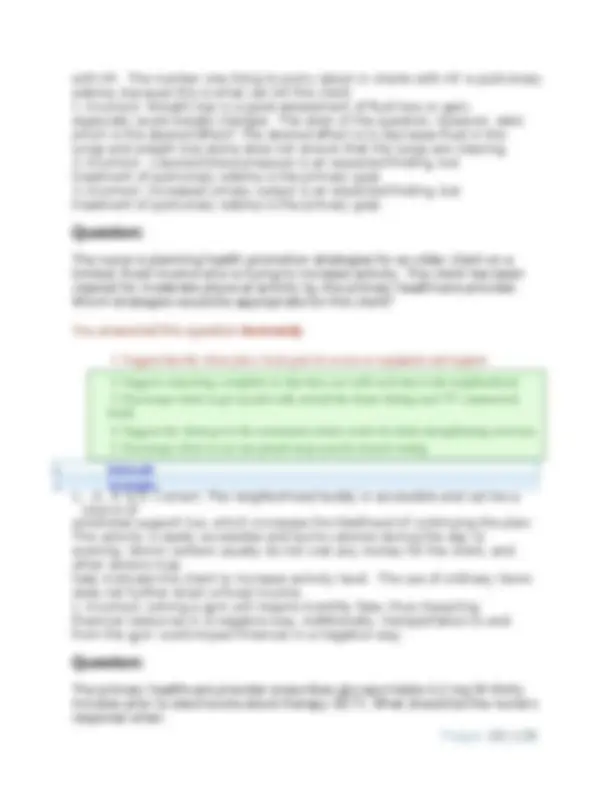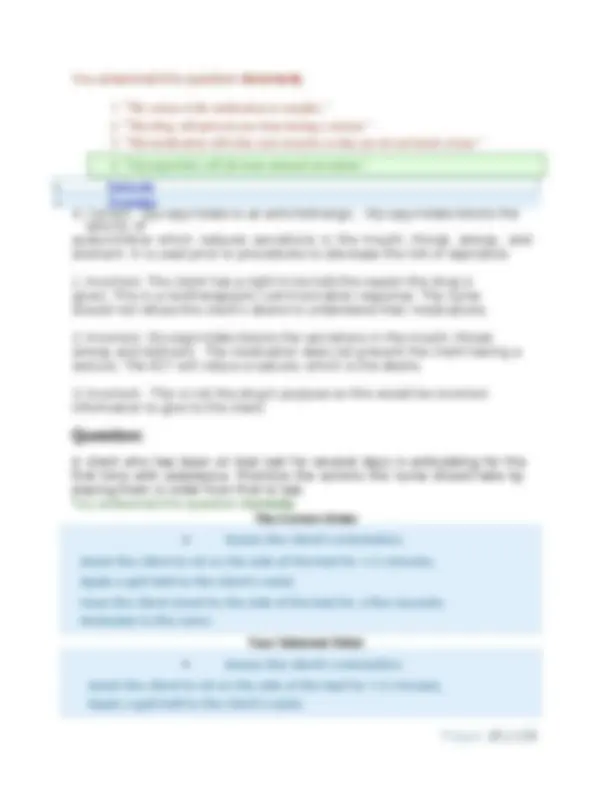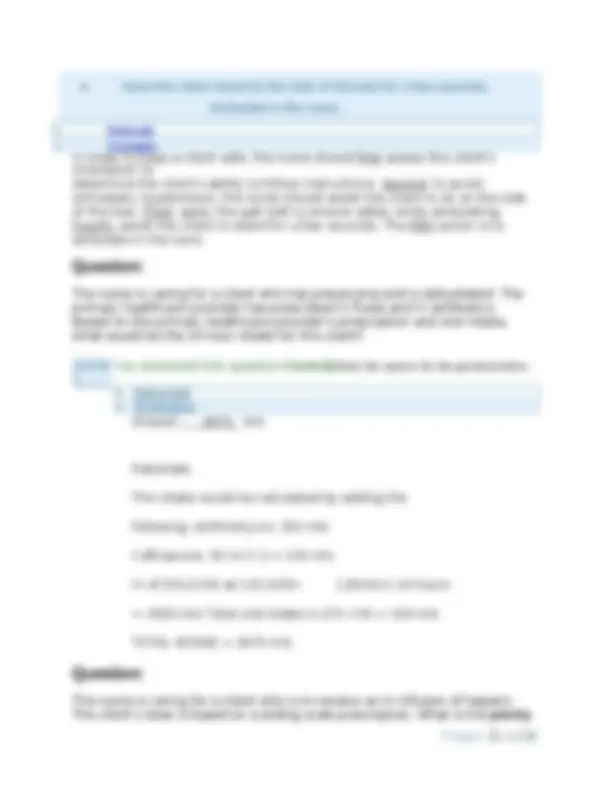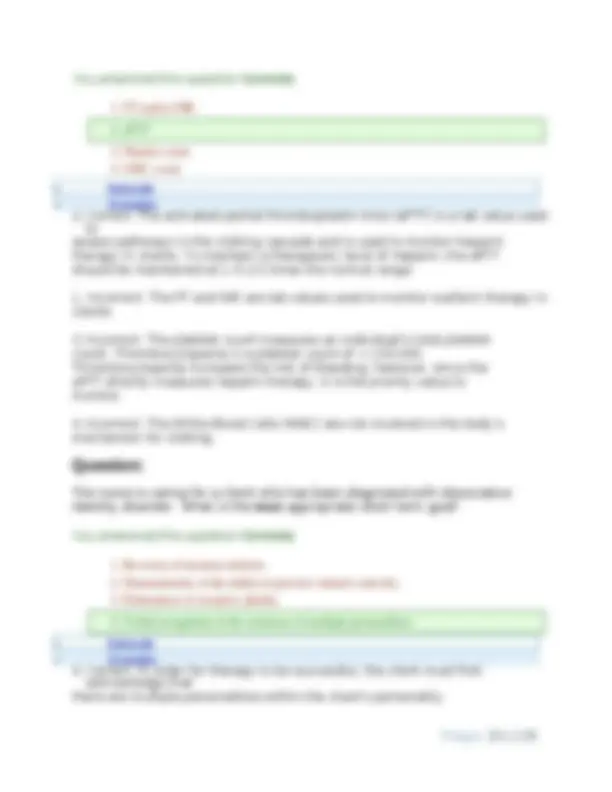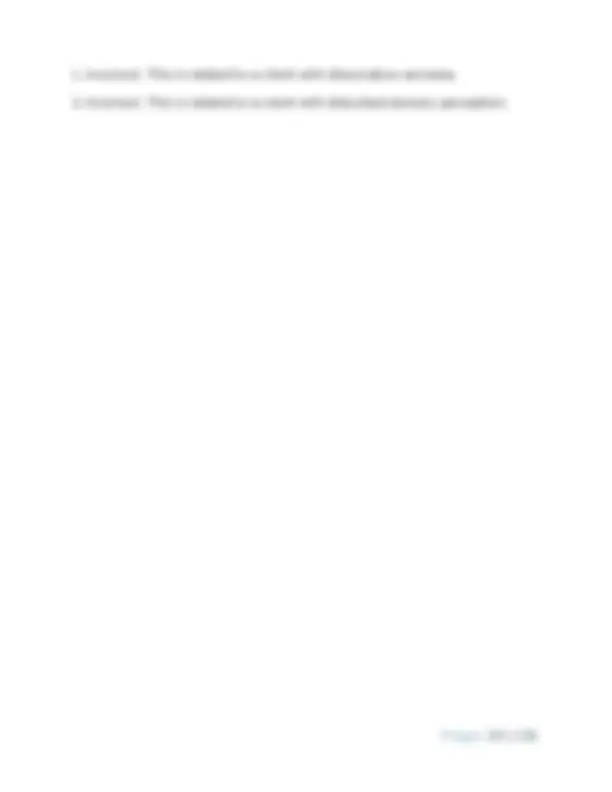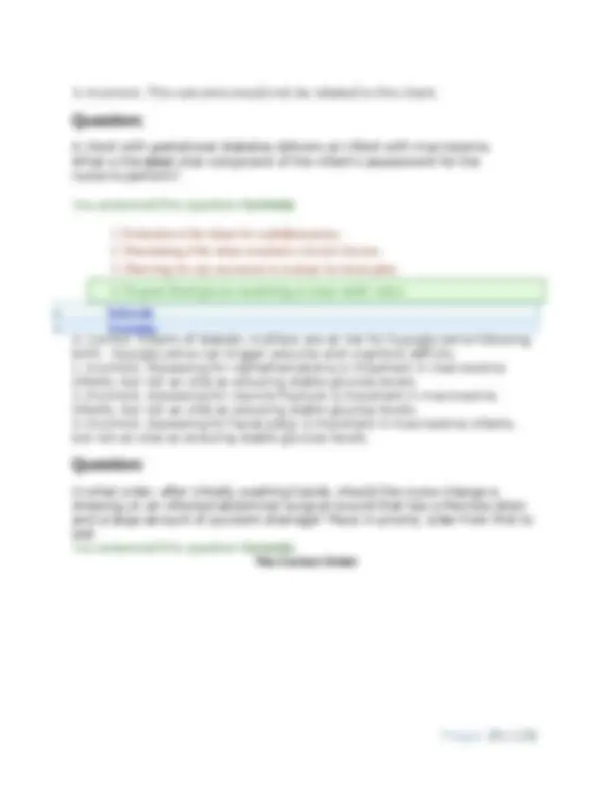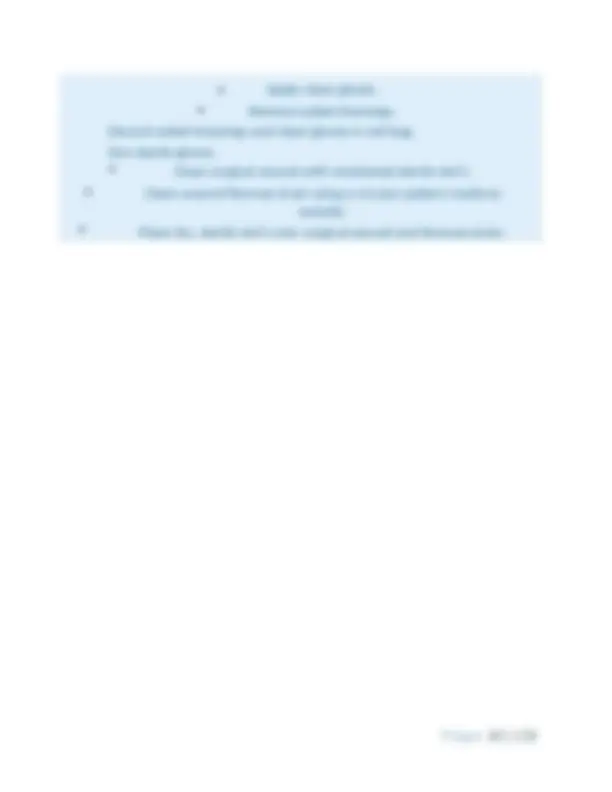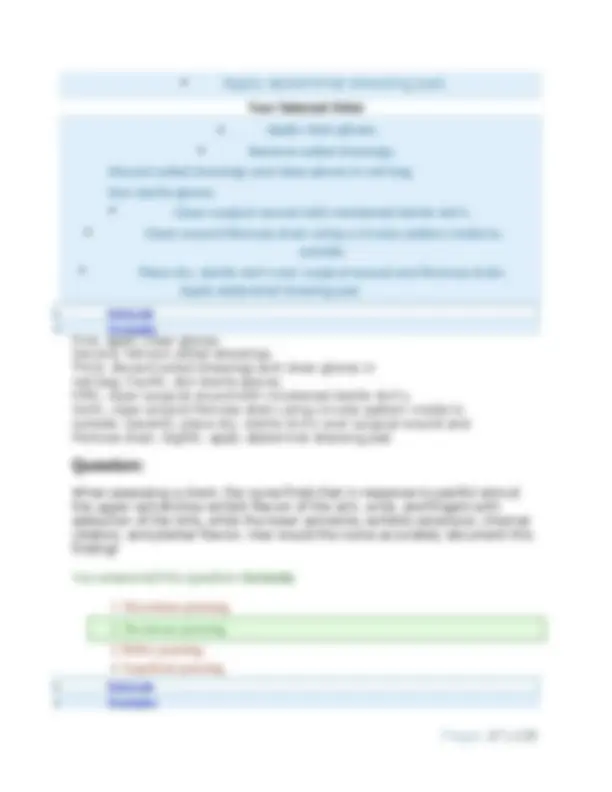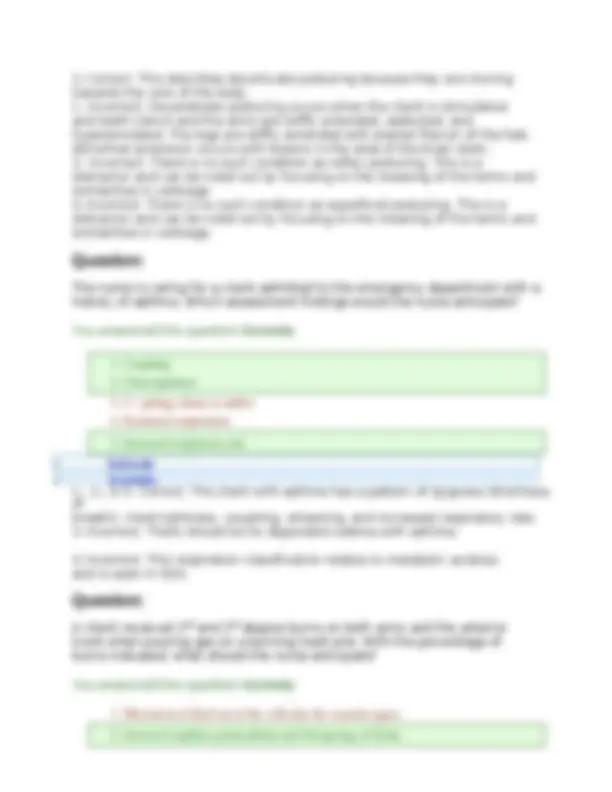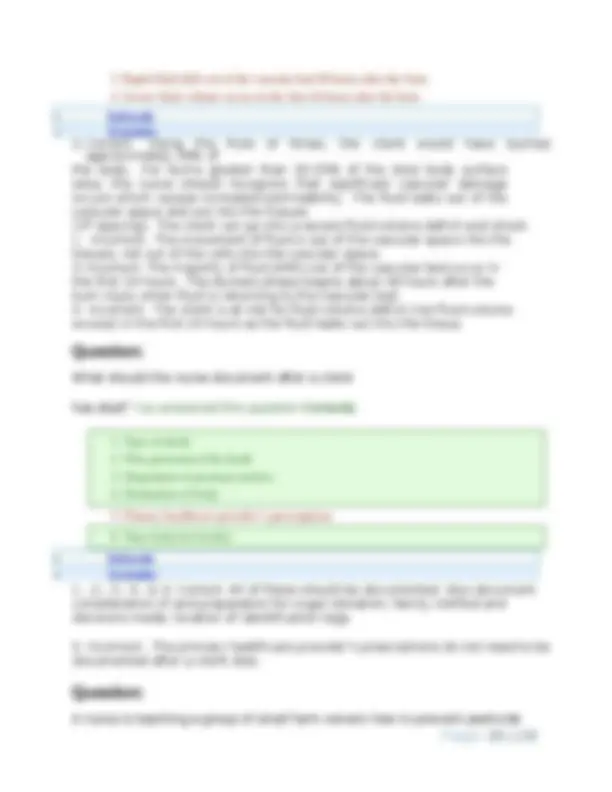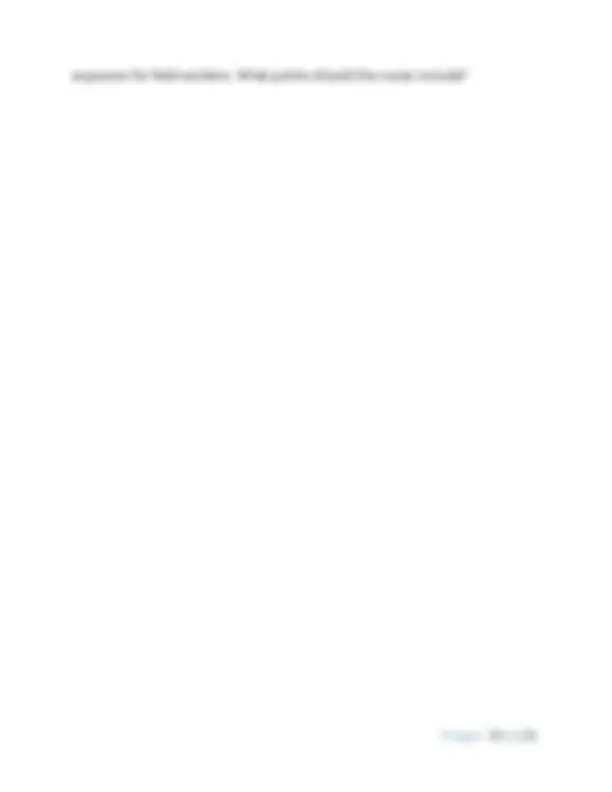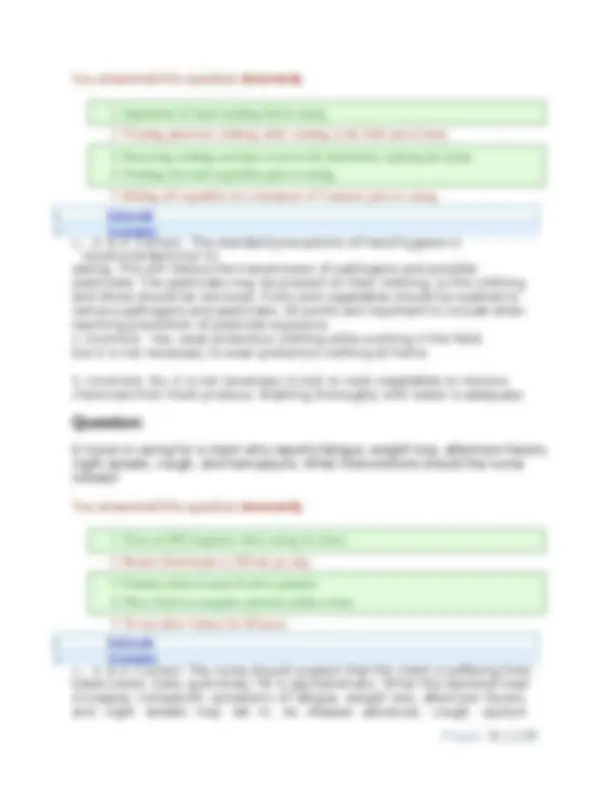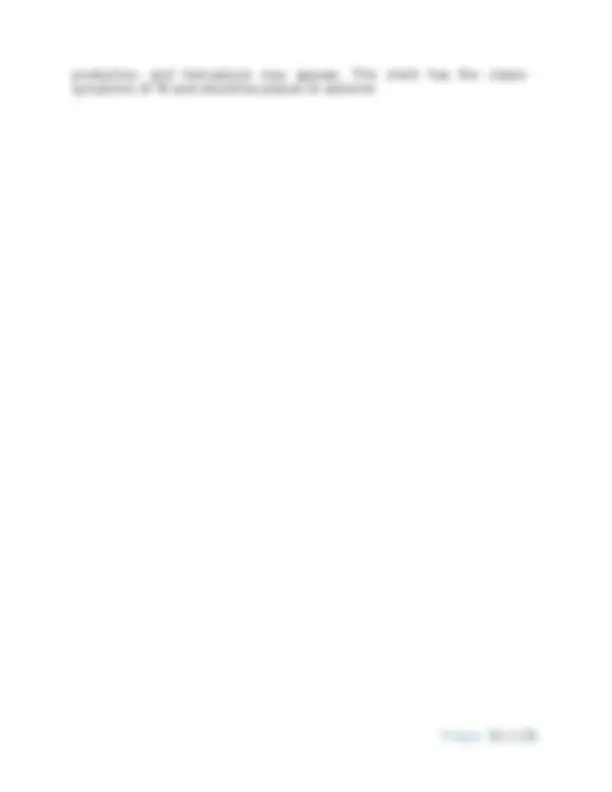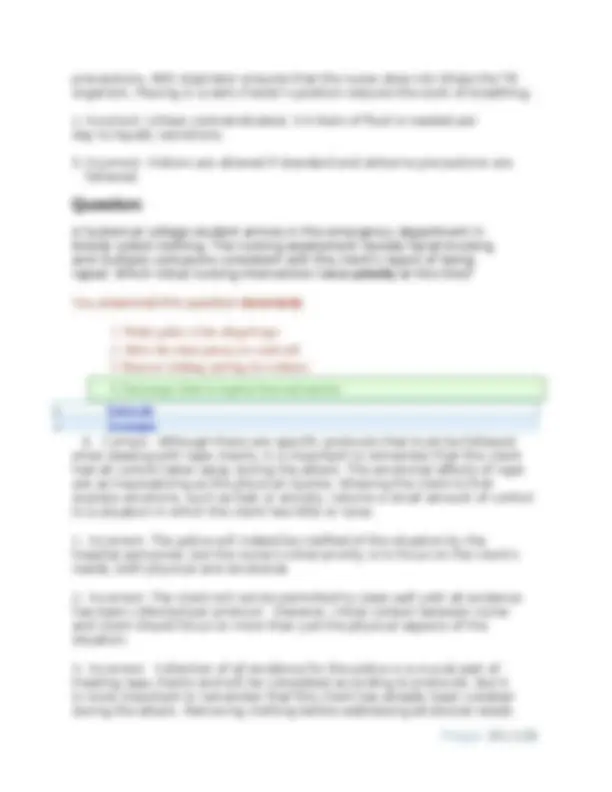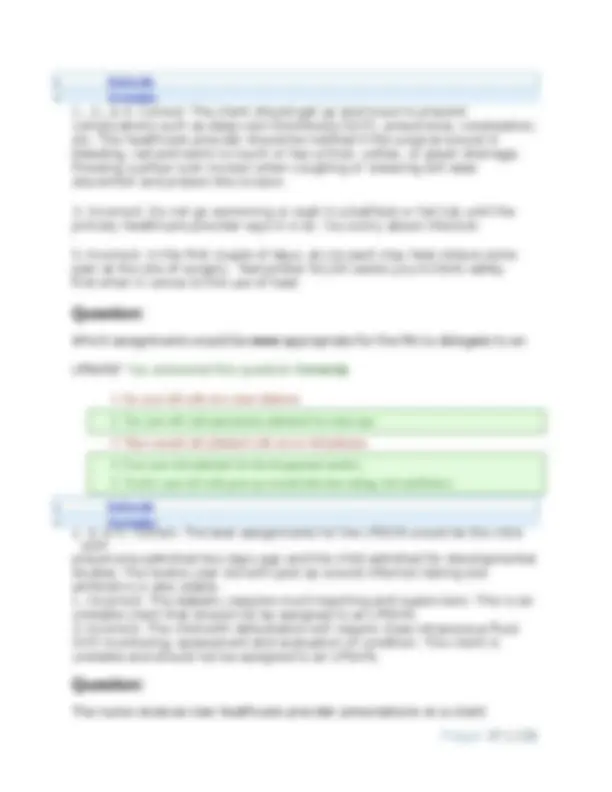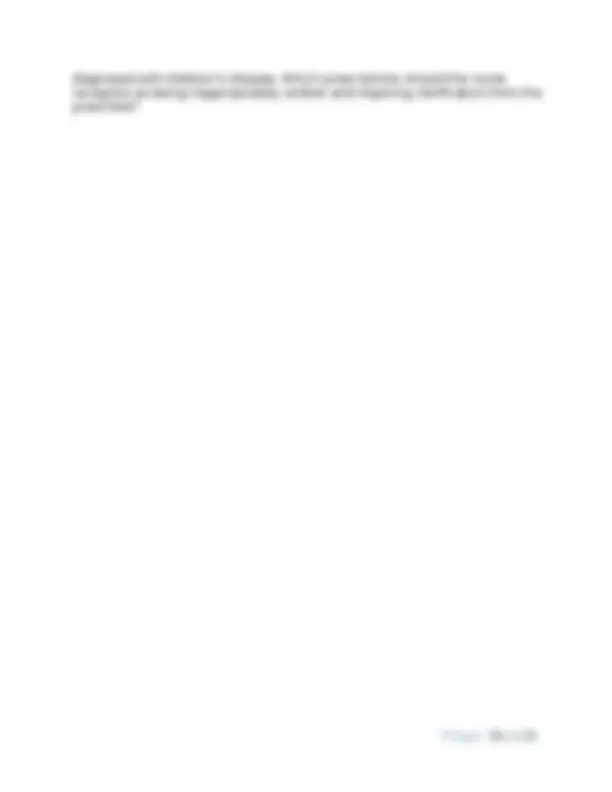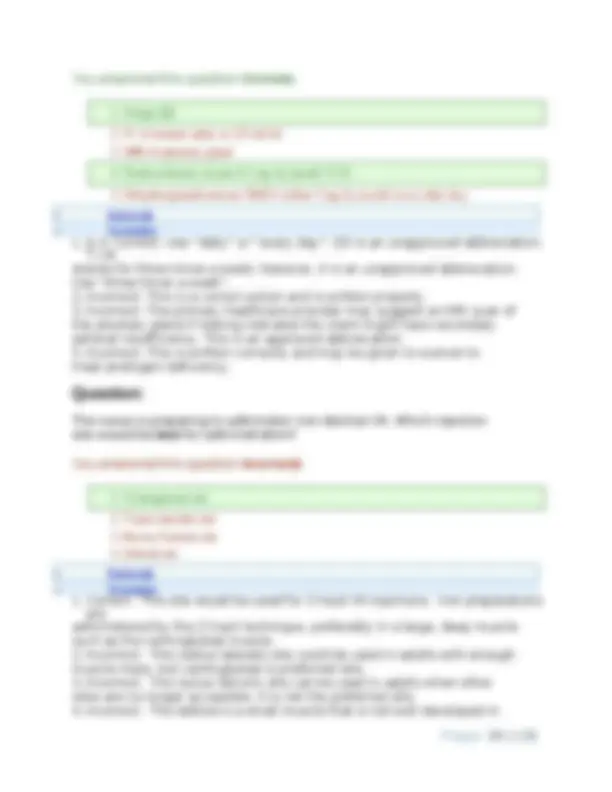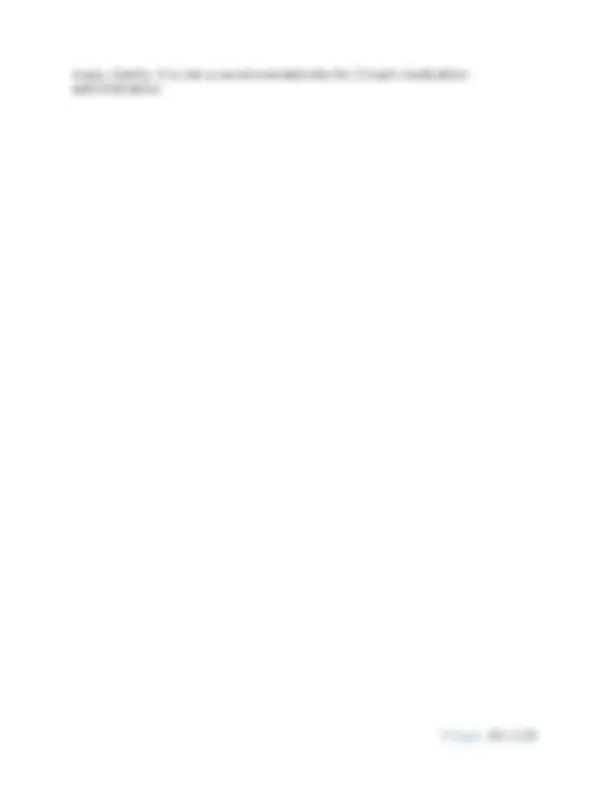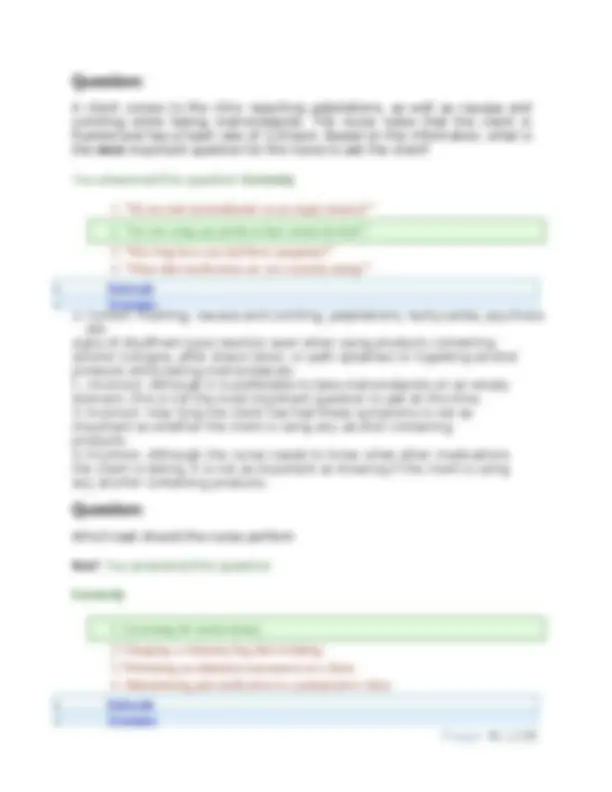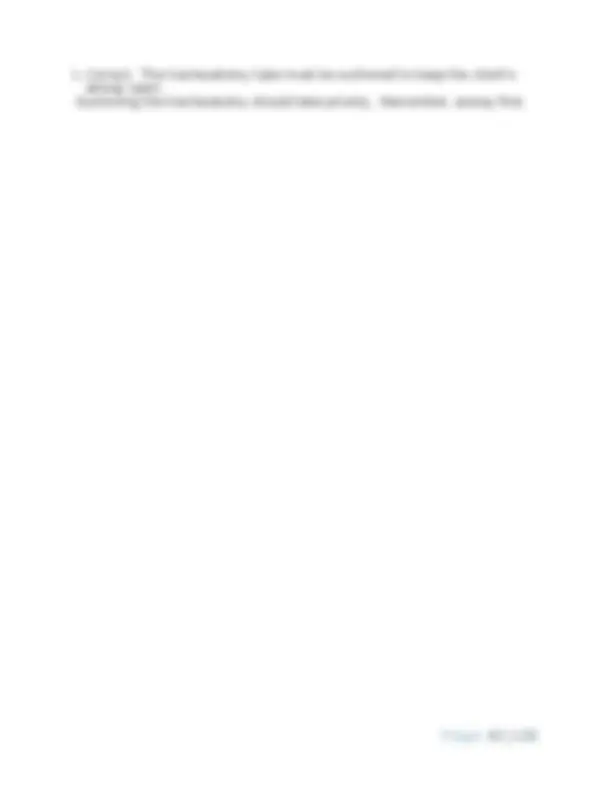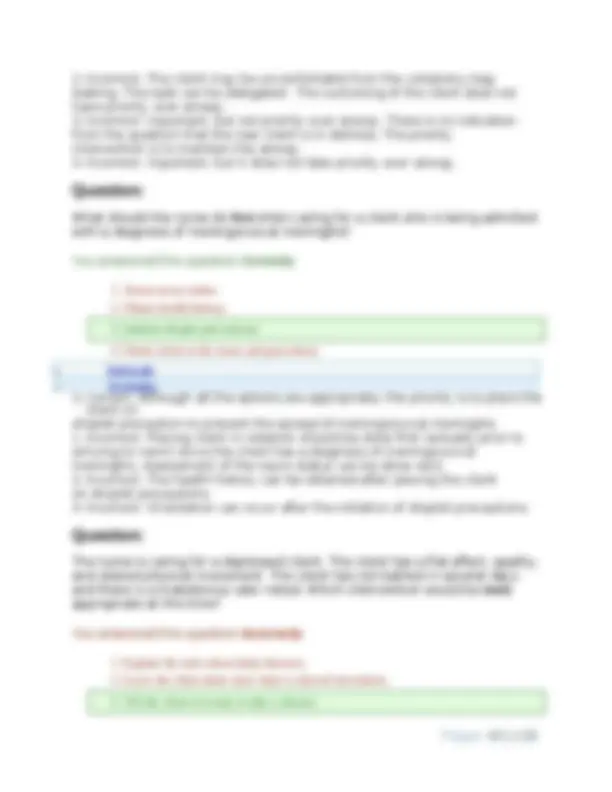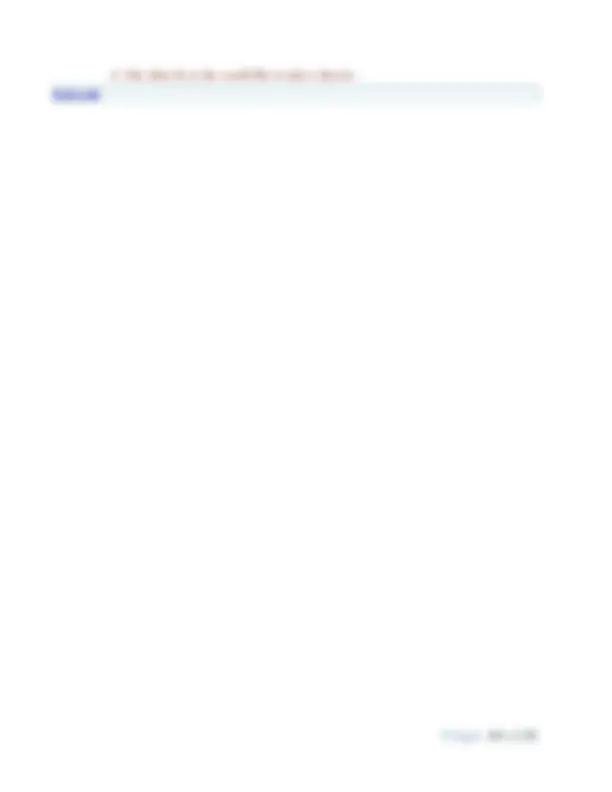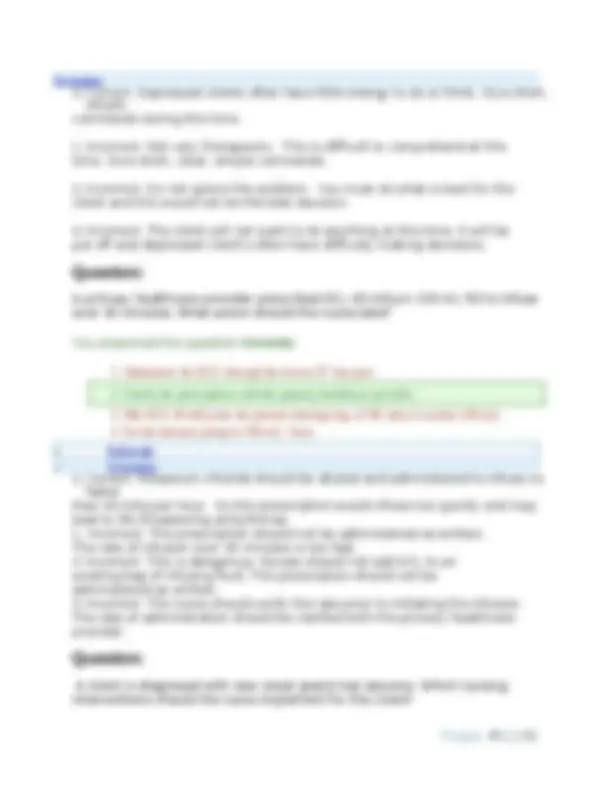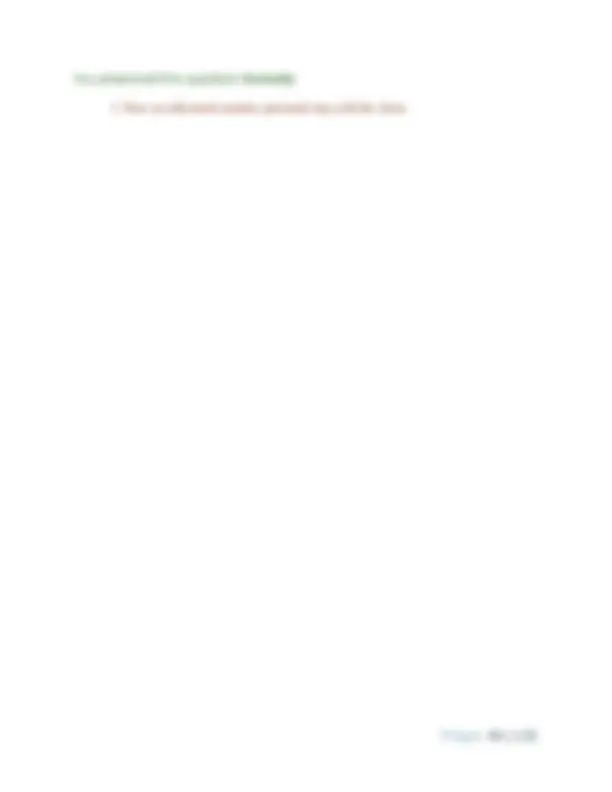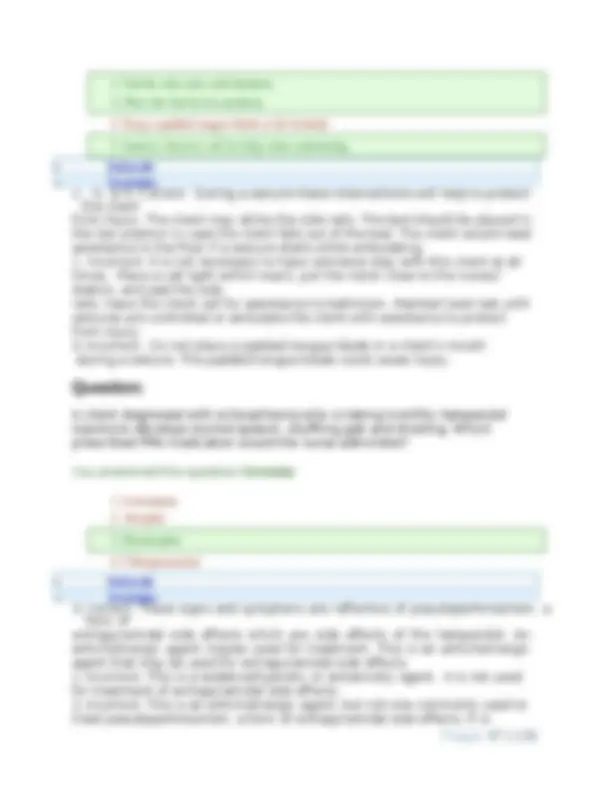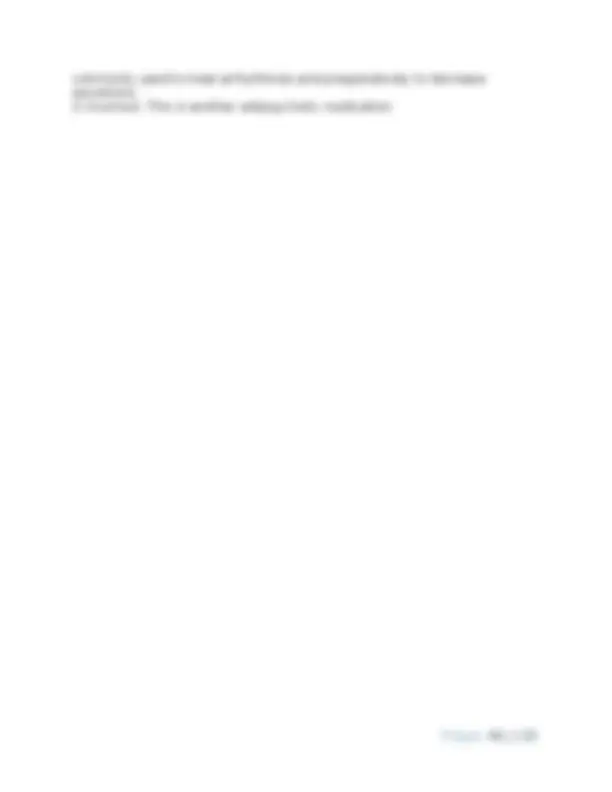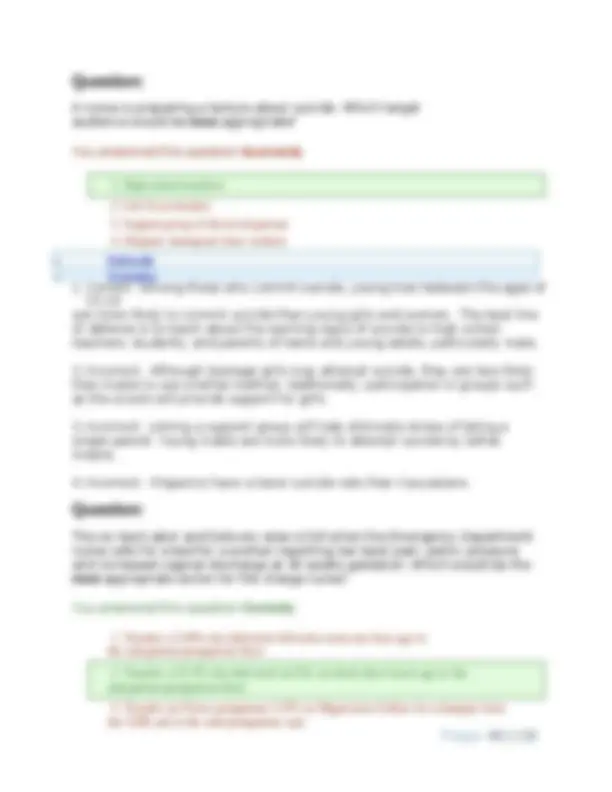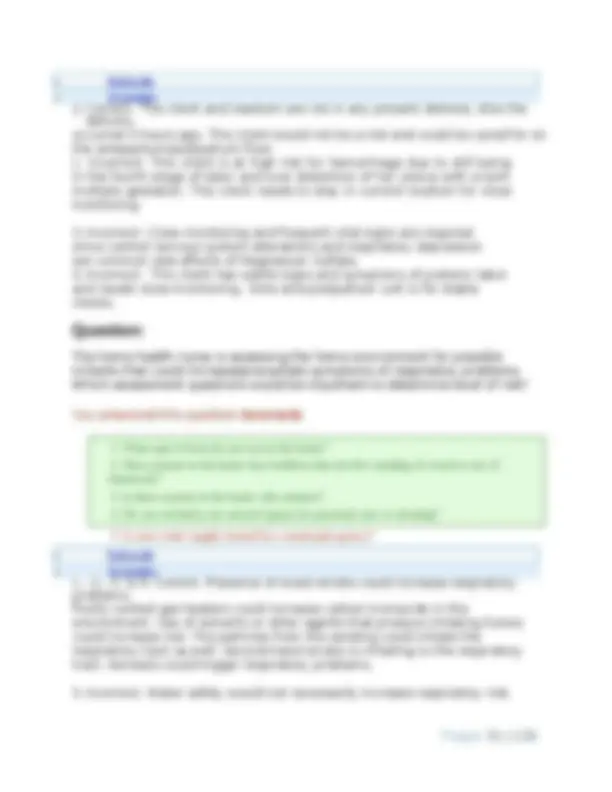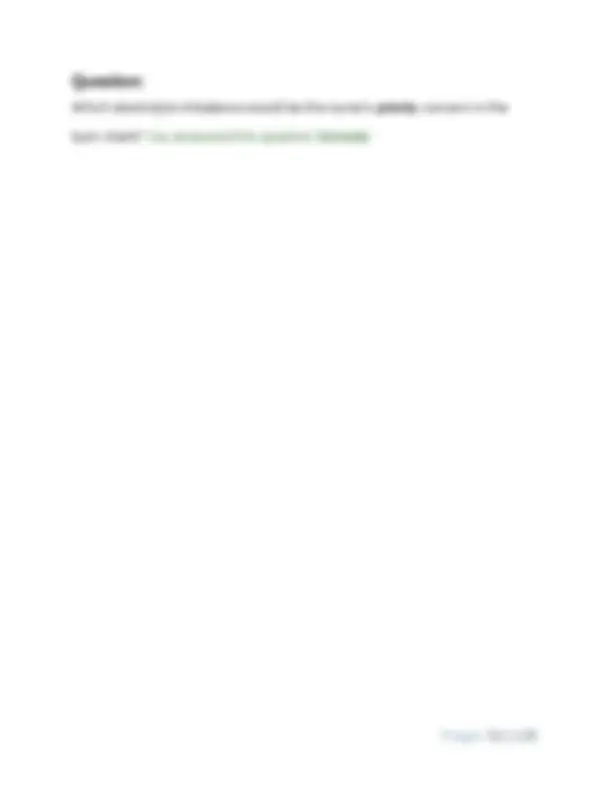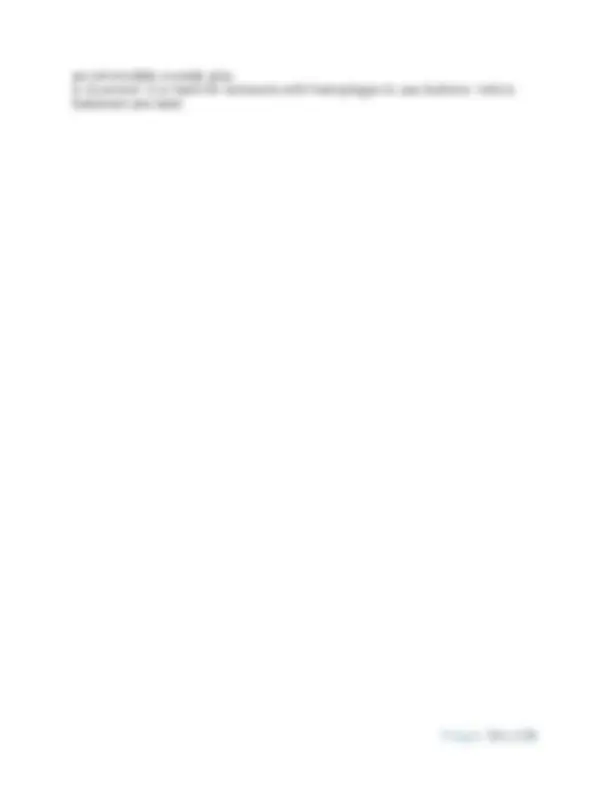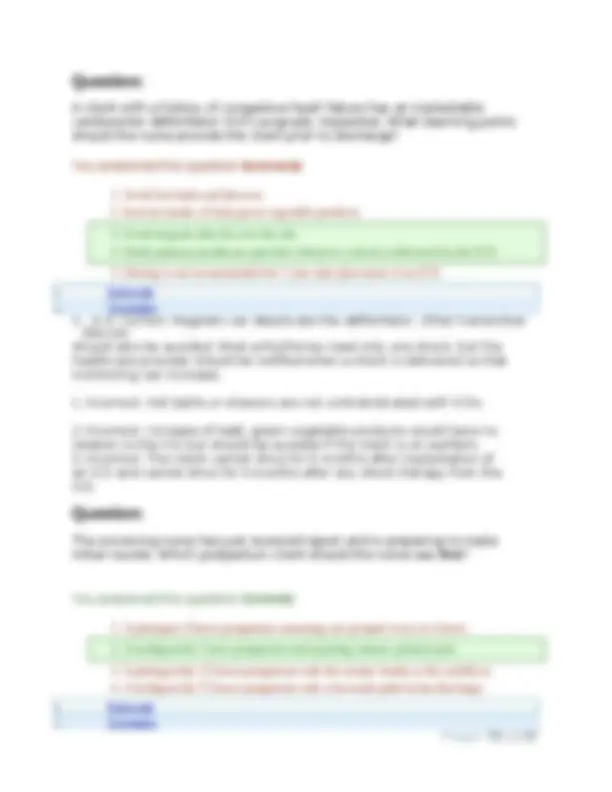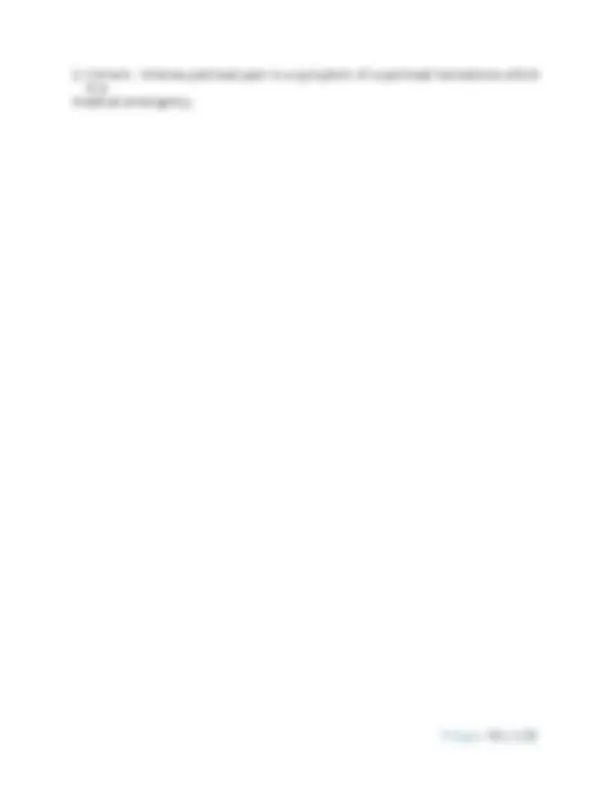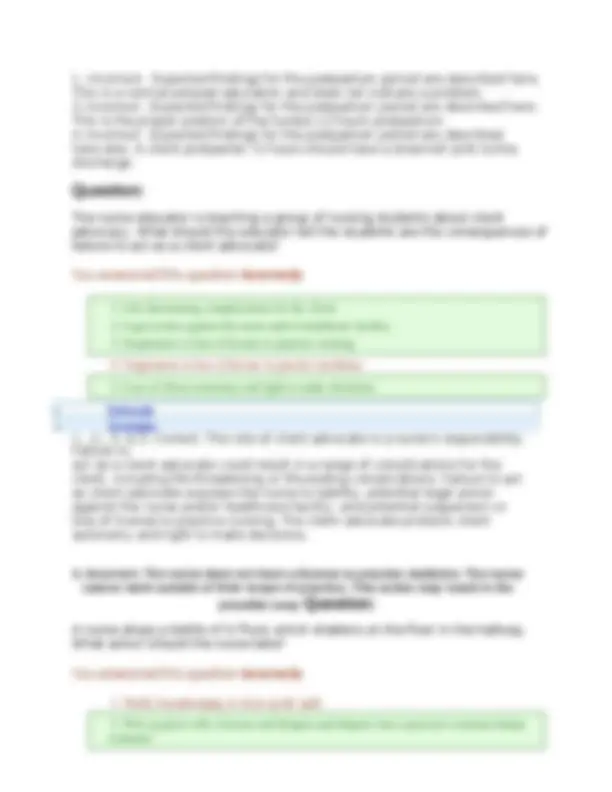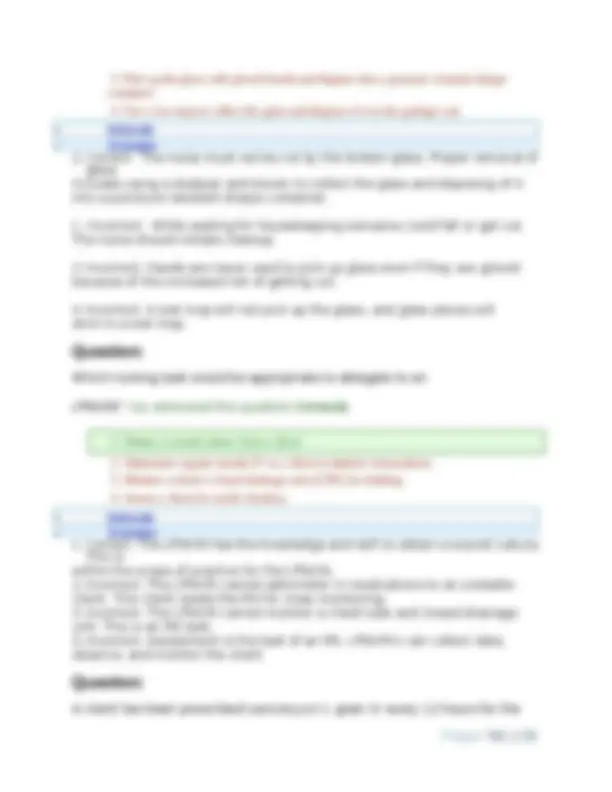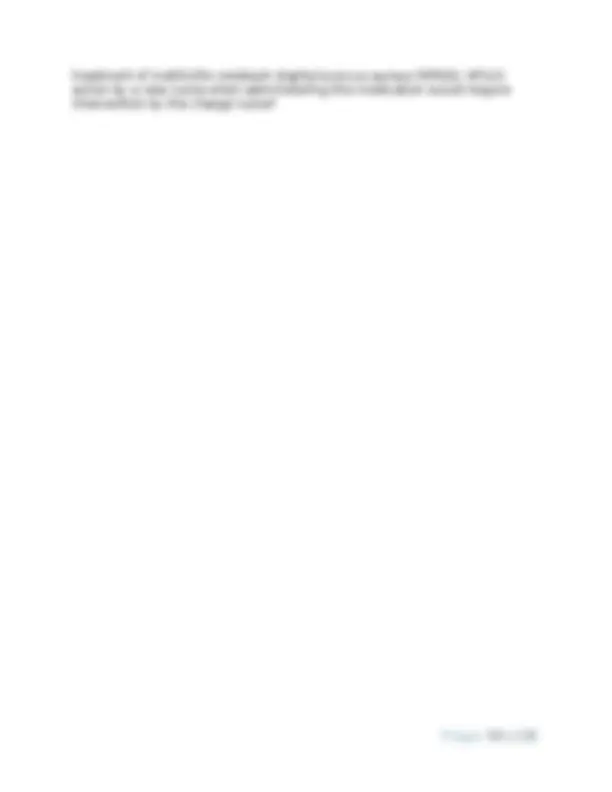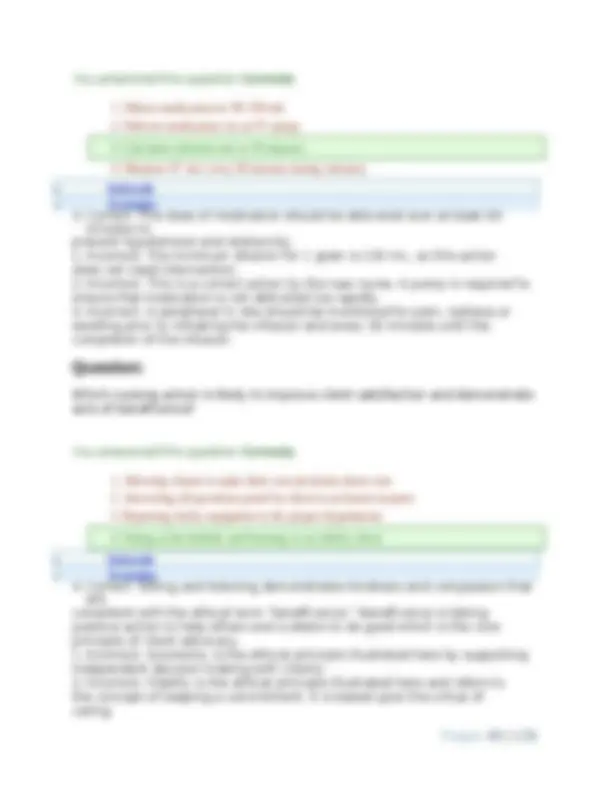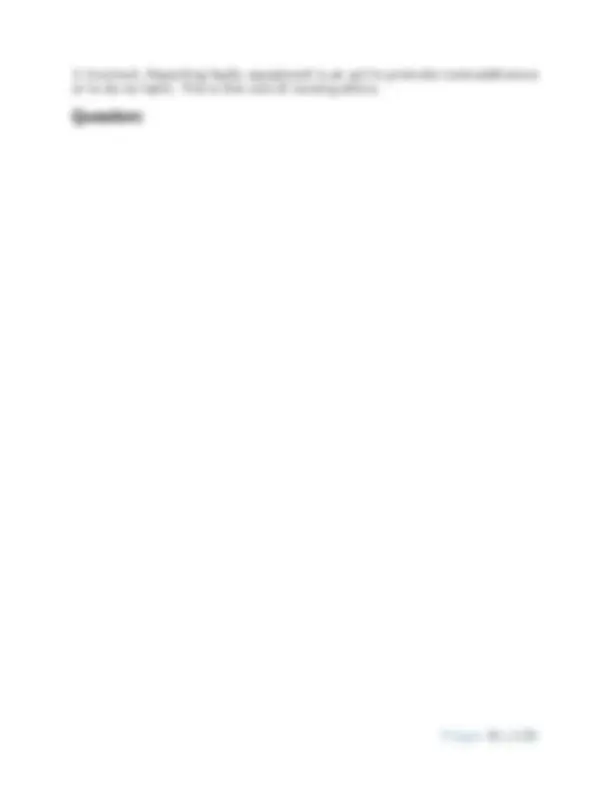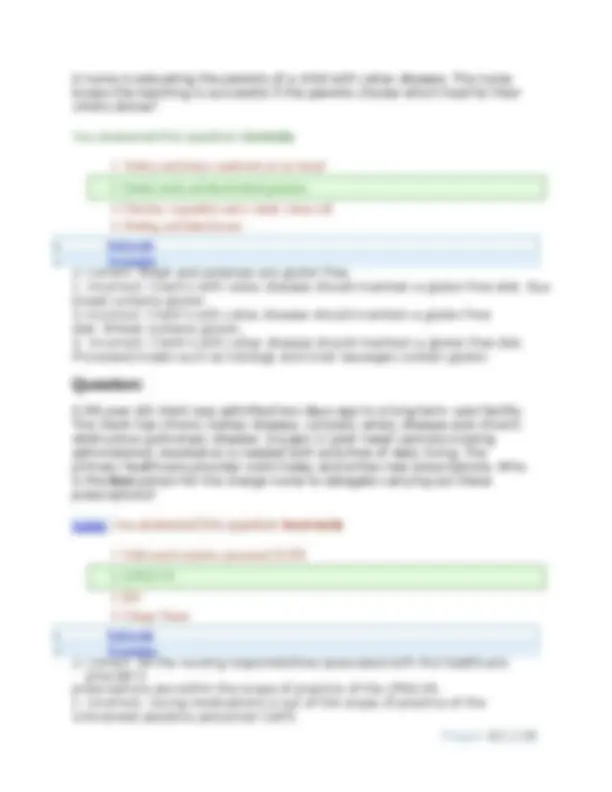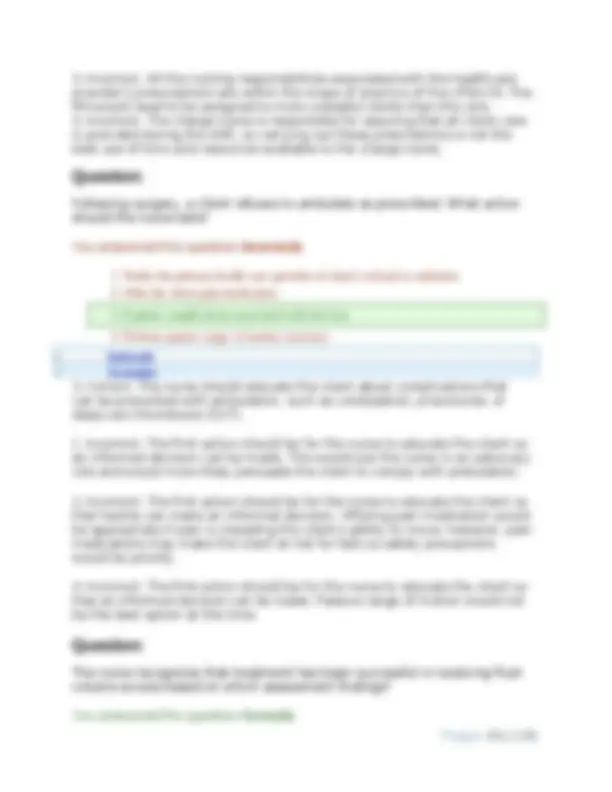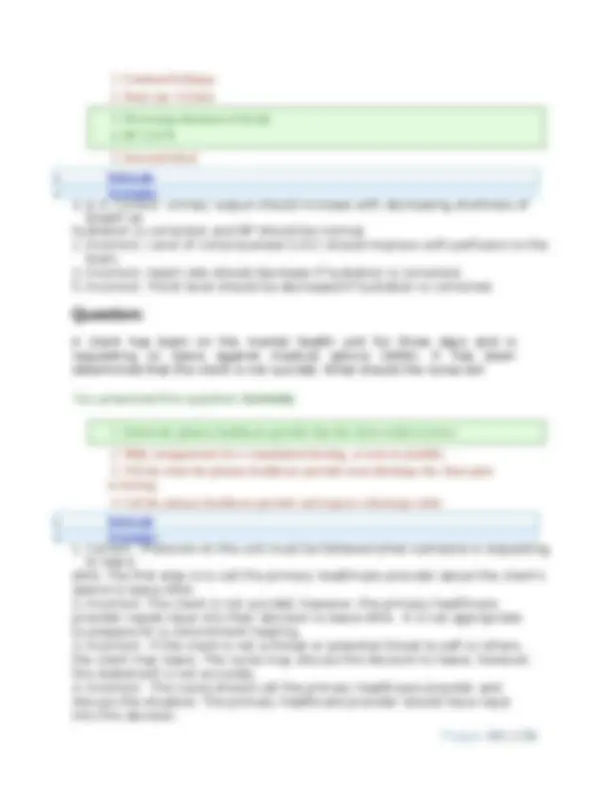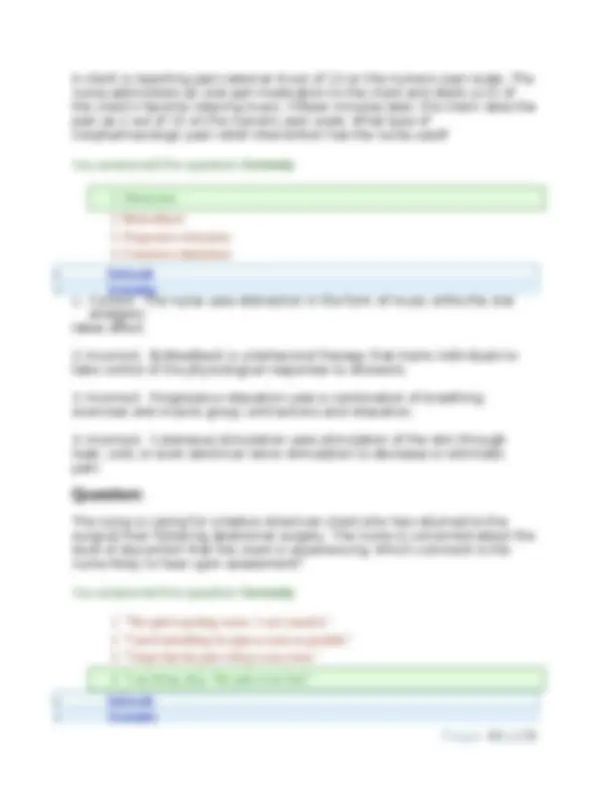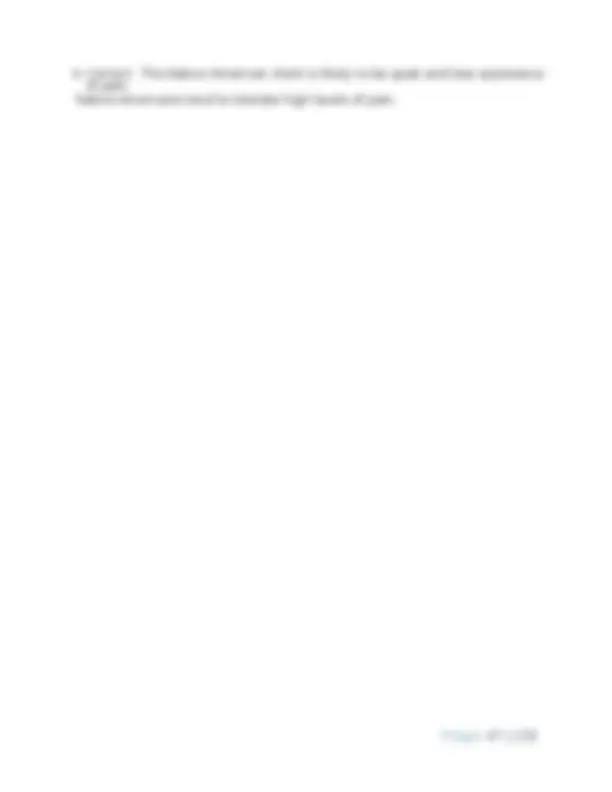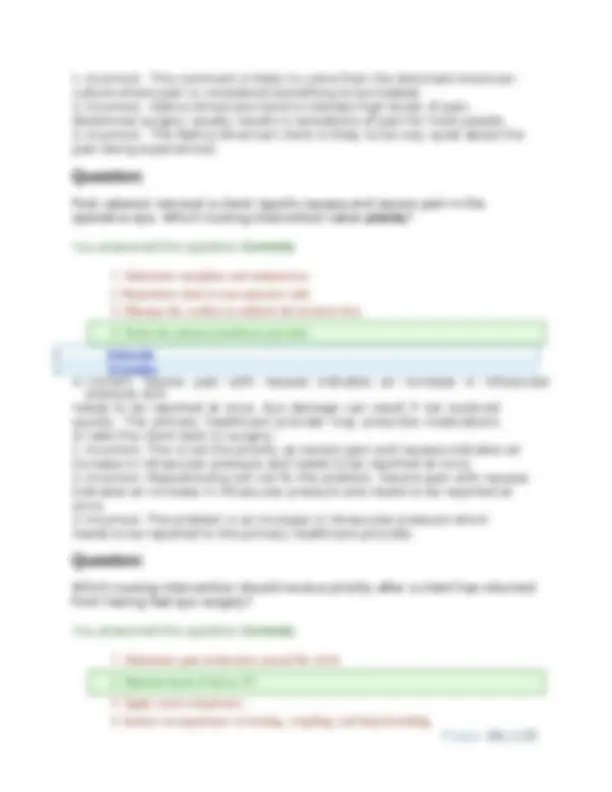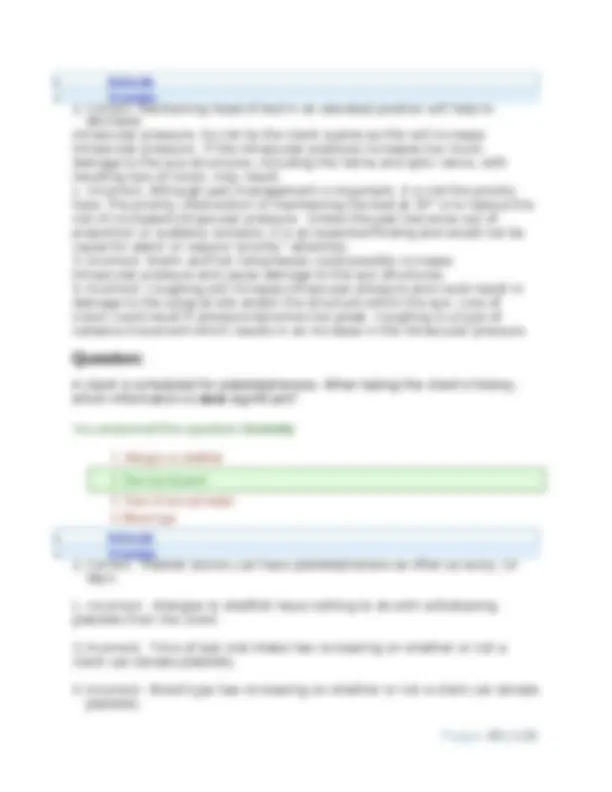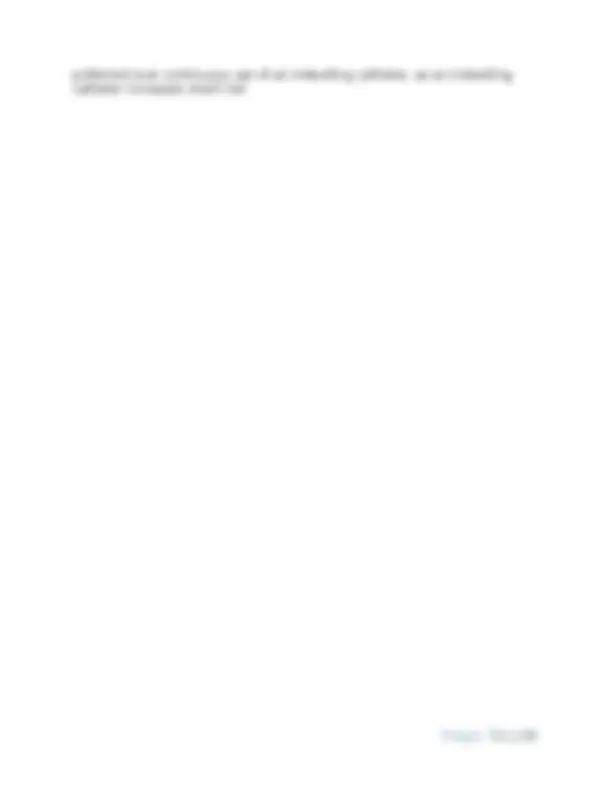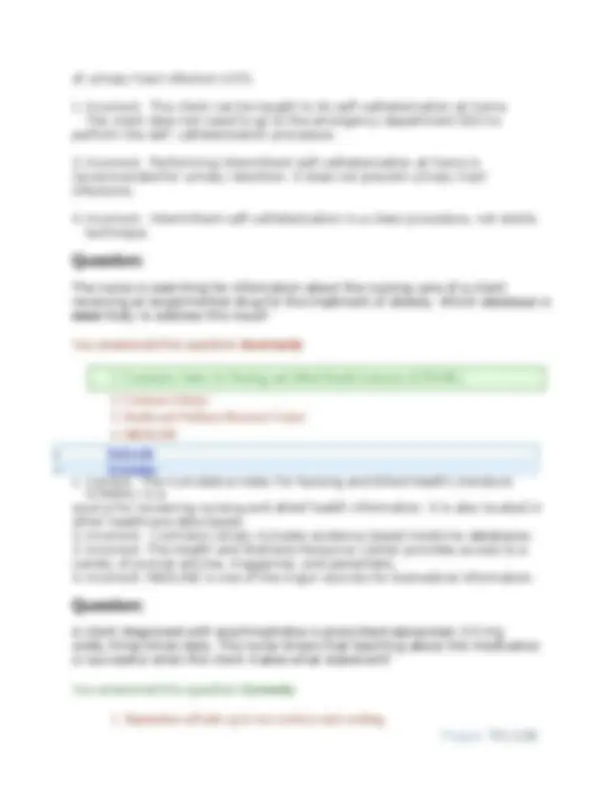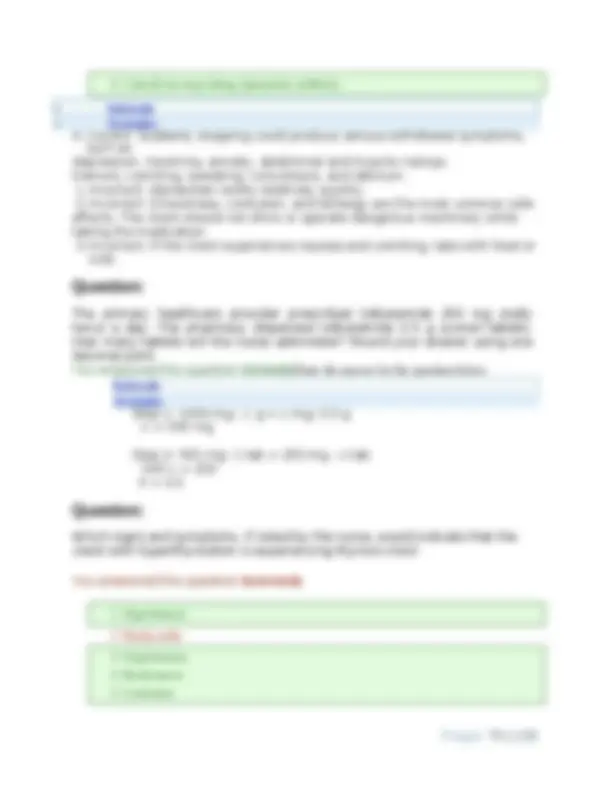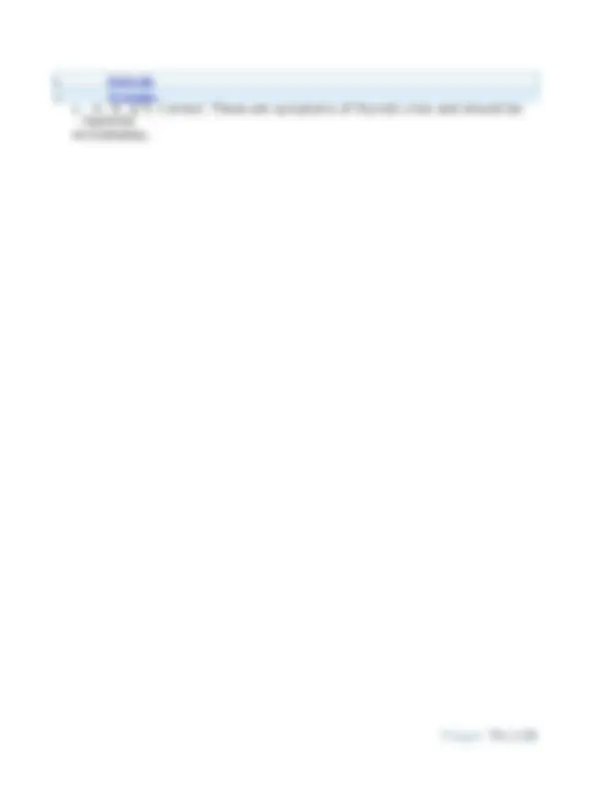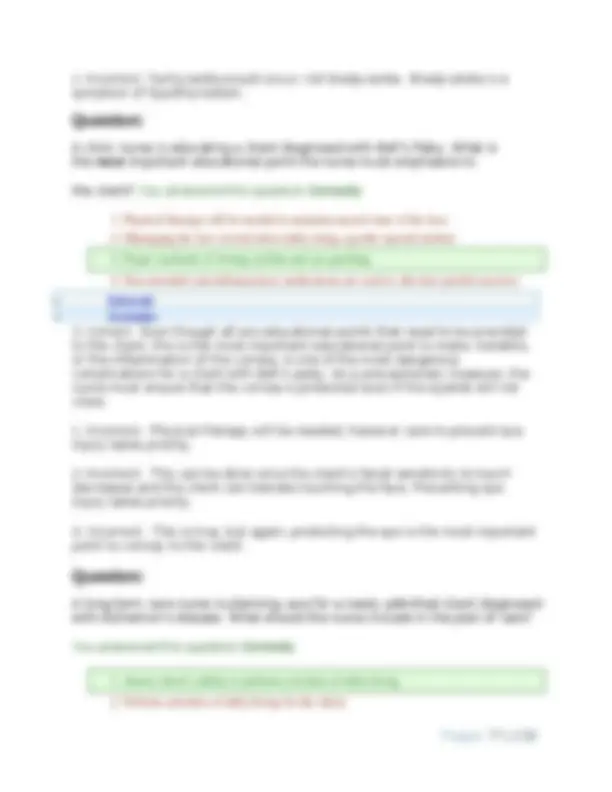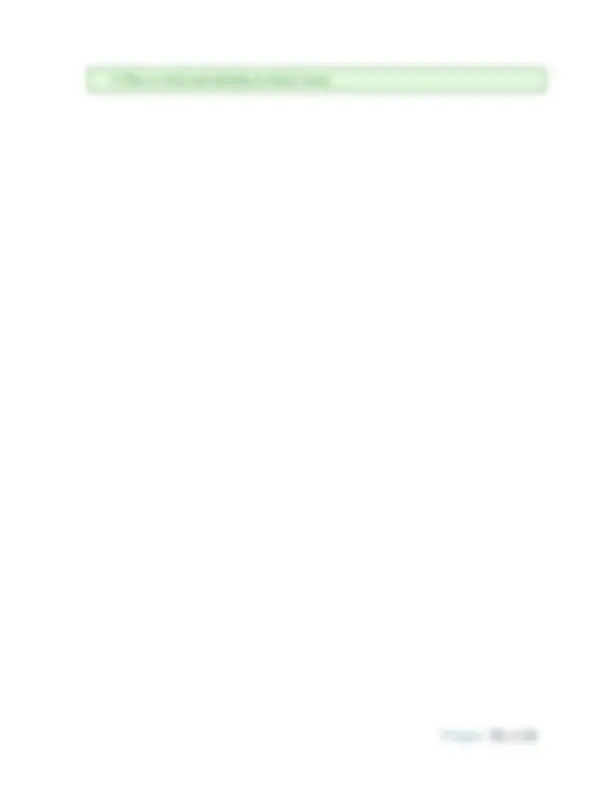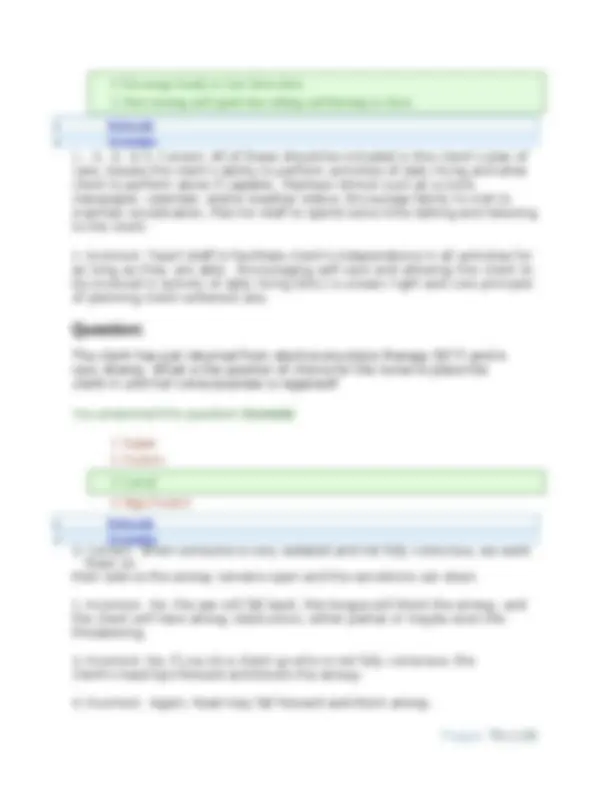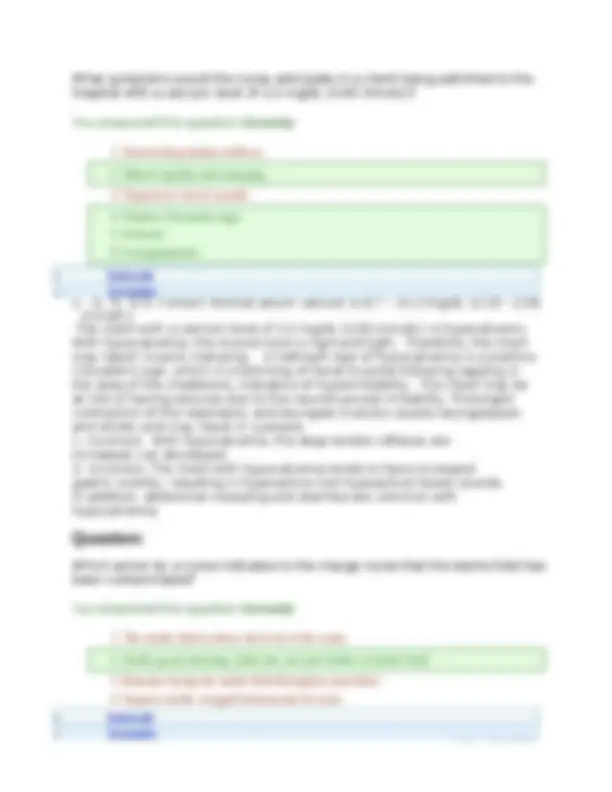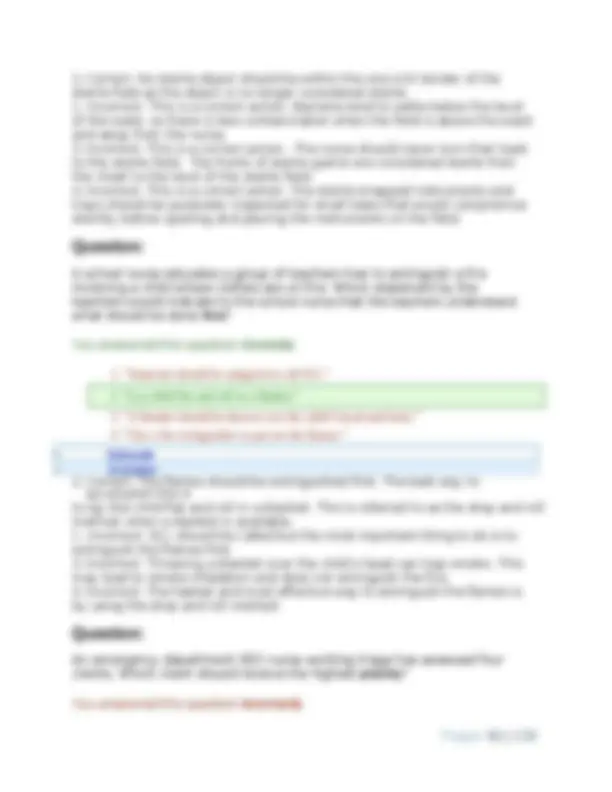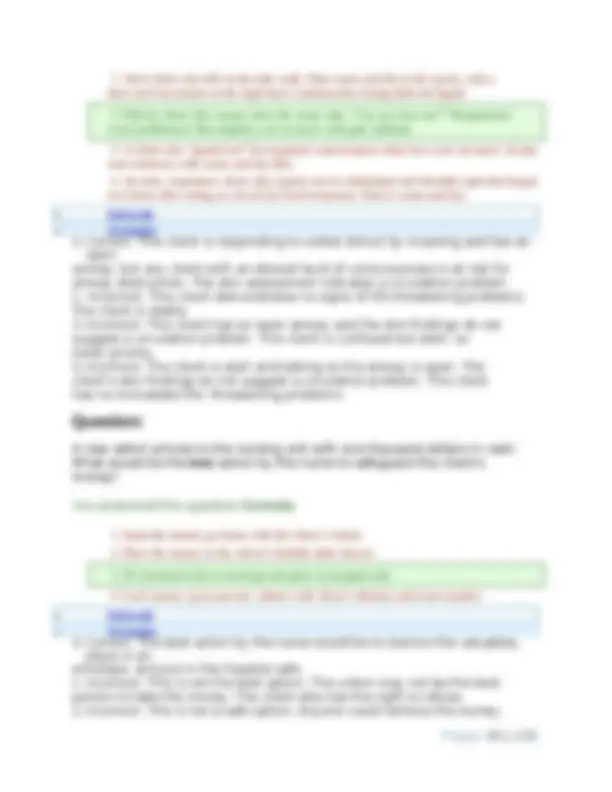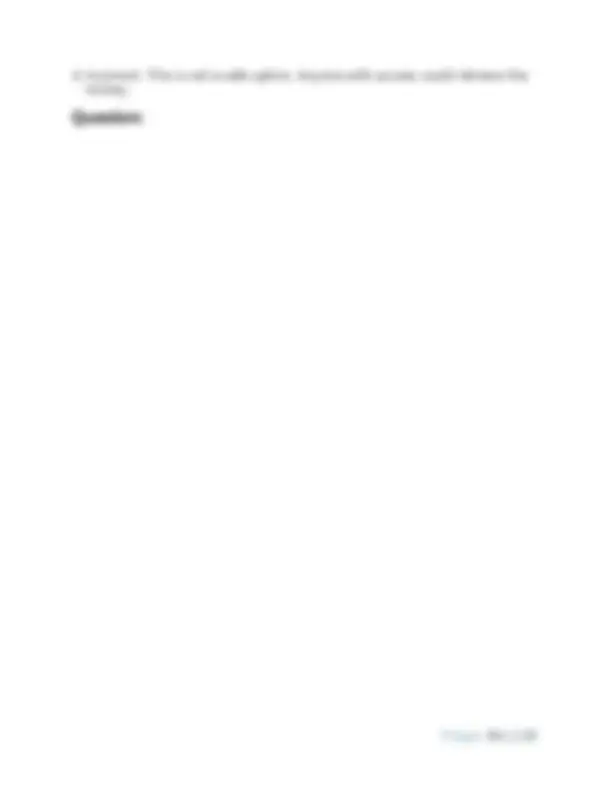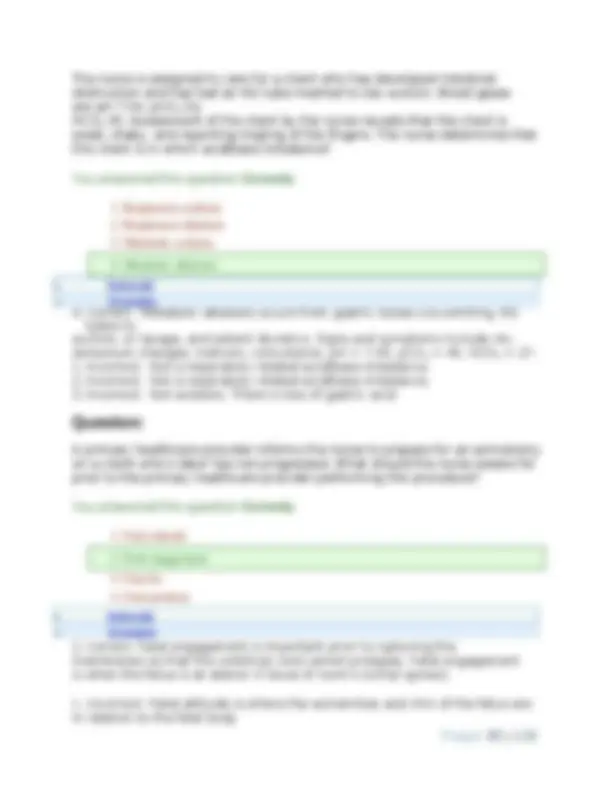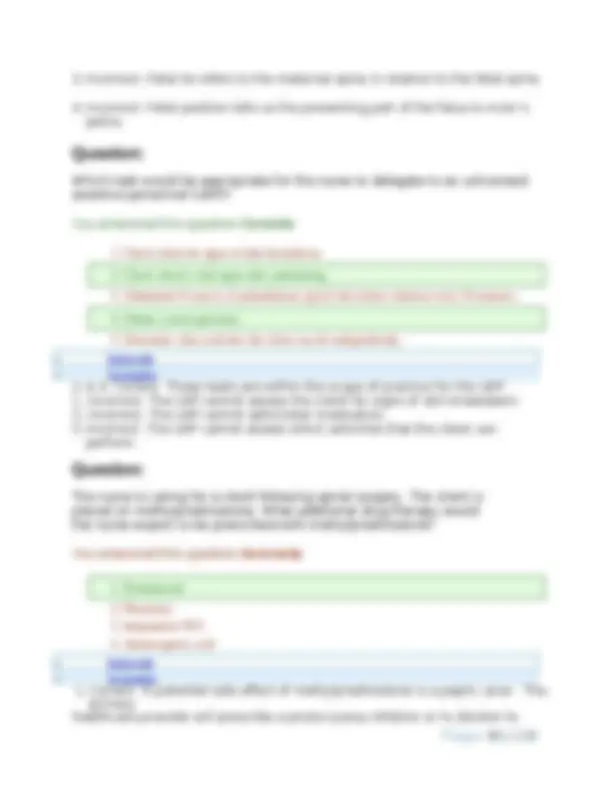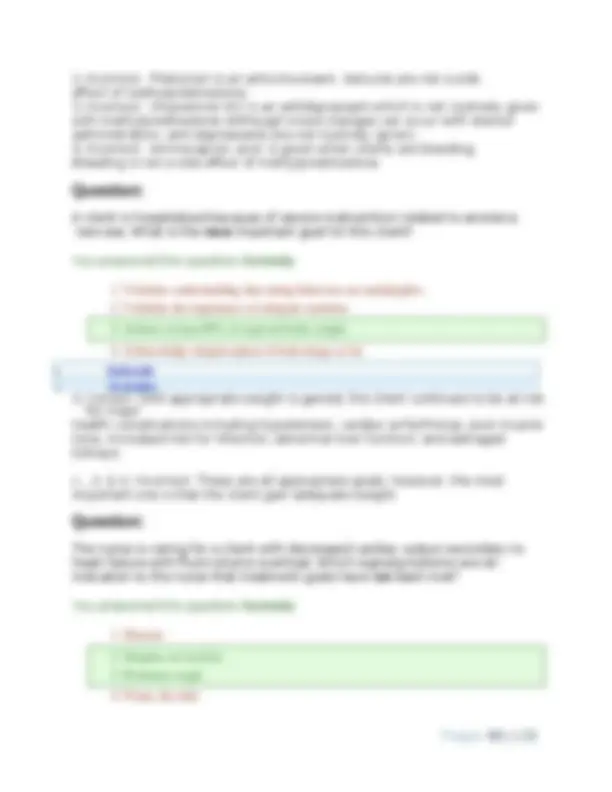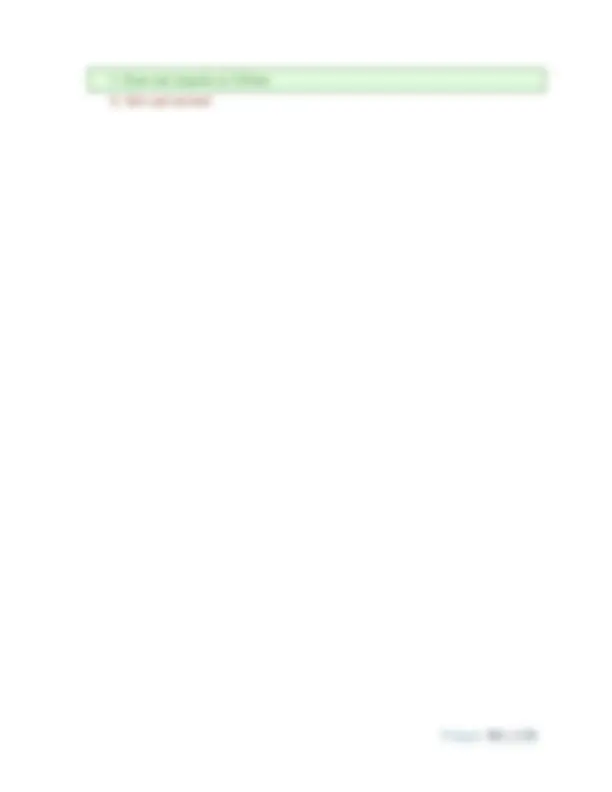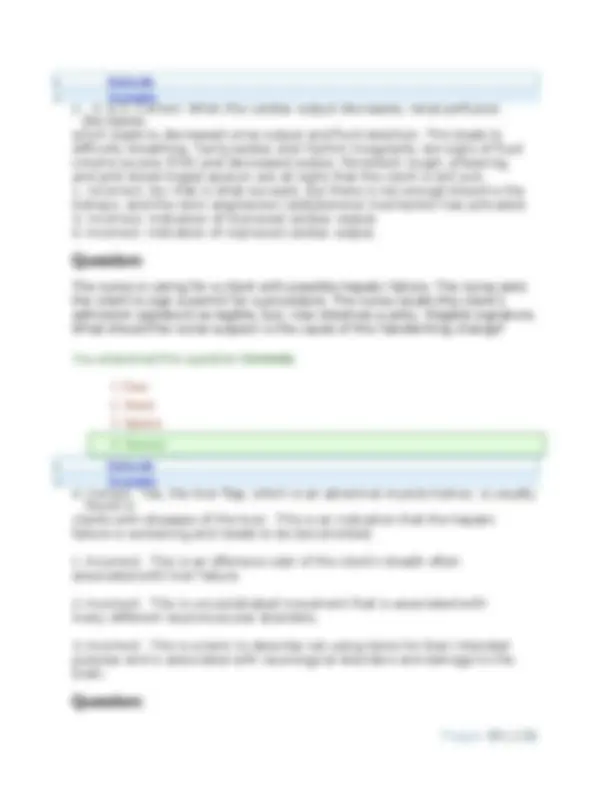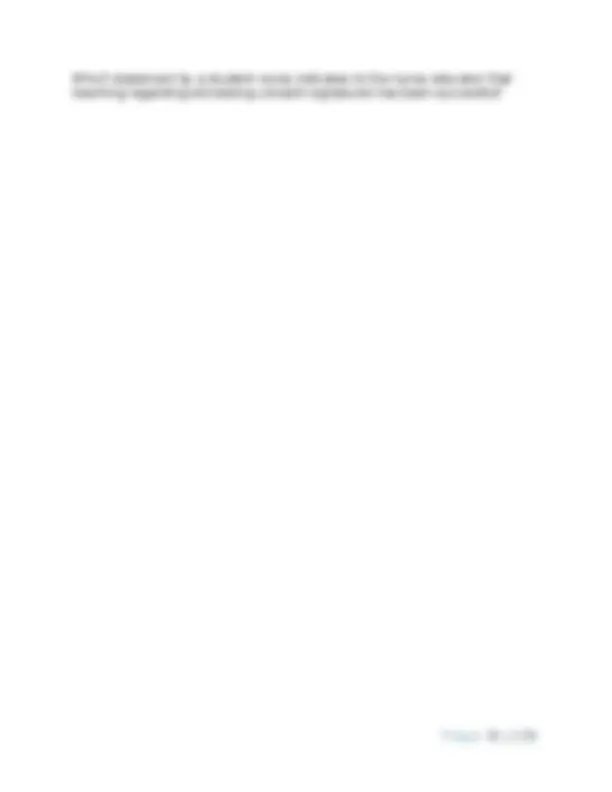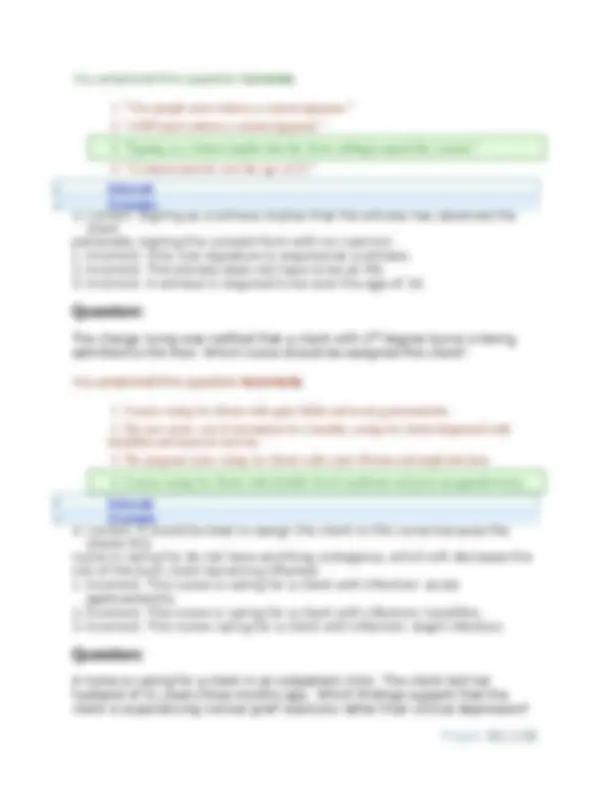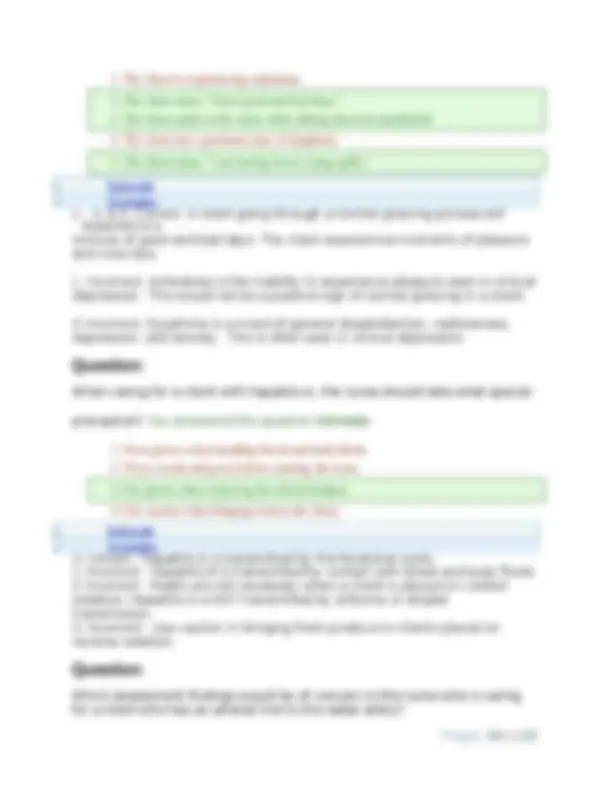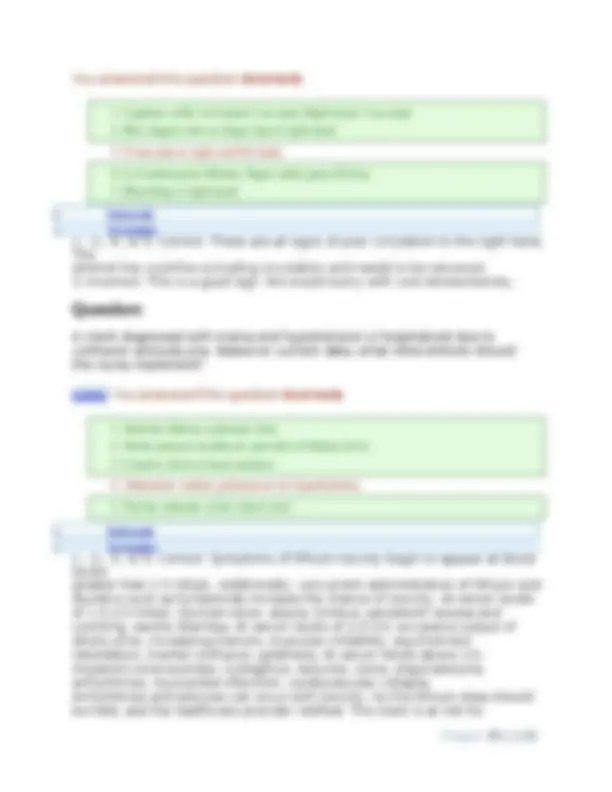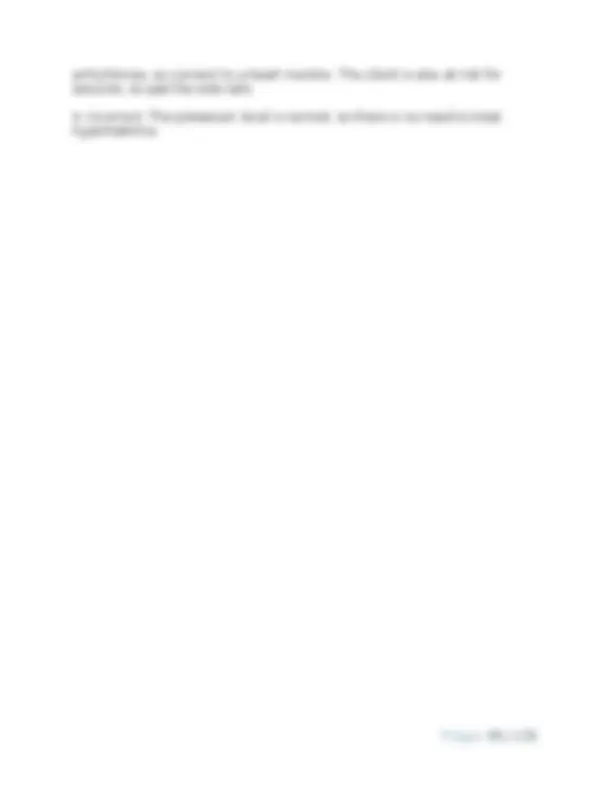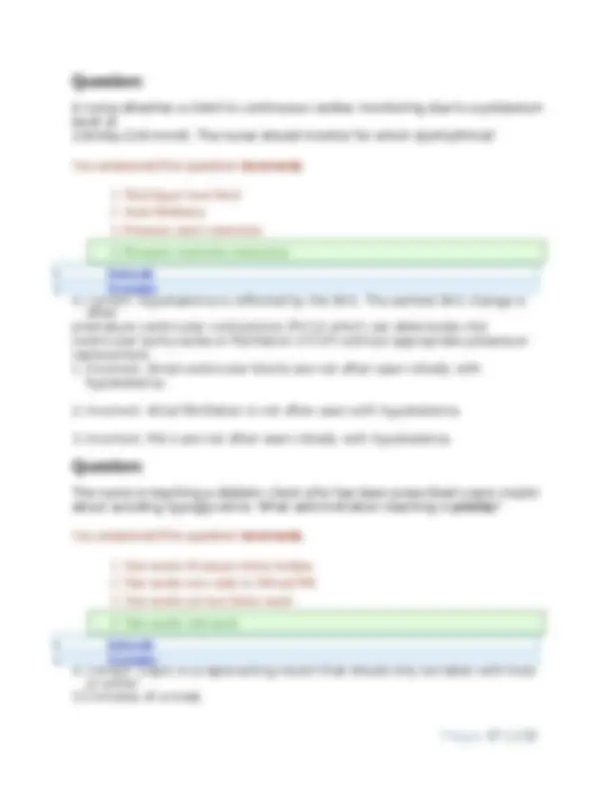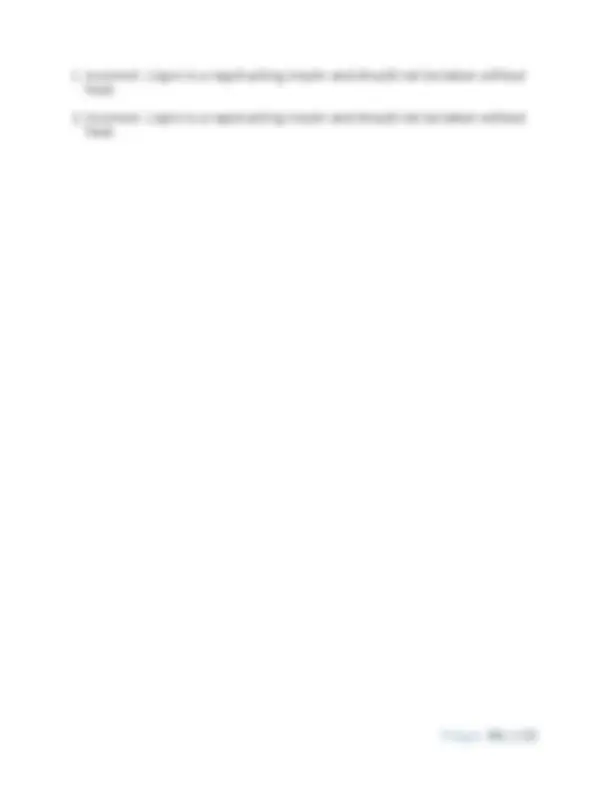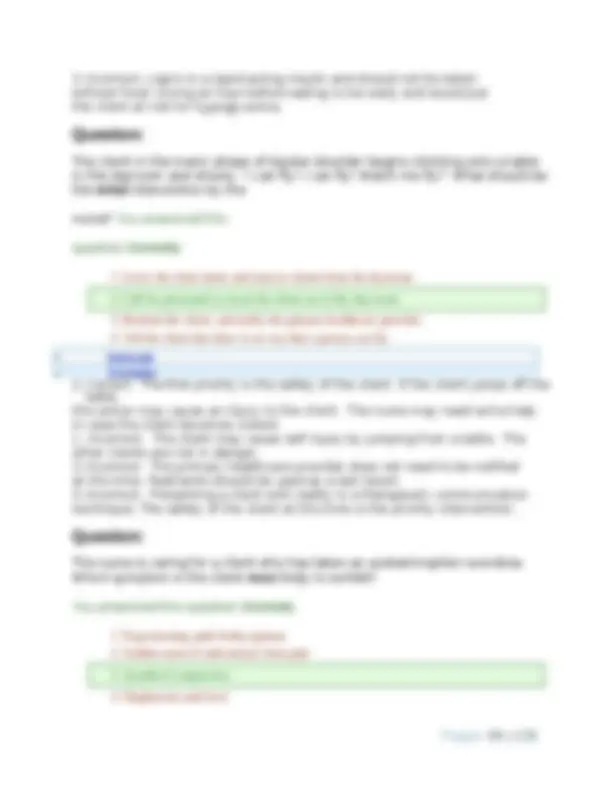Download Nursing Exam Questions and Strategies and more Exams Nursing in PDF only on Docsity!
RNSG 2331 - Exam 2-Capstone-1. Assured Success Downoad
To Pass .Attained A+
Question:
The nurse makes selections from the hospital menu for a client who is confused and suspicious of others. Which menu choice is best? You answered this question Correctly
- Ham and vegetable casserole
- Cheese and crackers
- Caffeine free tea
- Correct: A client who is suspicious of others needs foods that are packaged and can see them opened.
- Incorrect: A client who is suspicious of others needs to be able to identify the ingredients in the food that is being eaten. A casserole contains many ingredients and the client may fear that something has been added to the food.
- Incorrect: Finger foods are best for clients that are manic.
- Incorrect: Drinks and foods with no caffeine are okay for the confused and suspicious client but this menu choice is not the best choice from the list here.
Question:
Two days after a myocardial infarction, a client begins reporting orthopnea and dyspnea. Further assessment reveals bi-basilar crackles, jugular venous distension, an S3 heart sound, a BP of 100/60 mm Hg, and apical pulse of 90 beats per minute. The urine output has steadily declined over the past 12 hours. What should the nurse do first? You answered this question Correctly
- Notify the primary healthcare provider.
- Increase the IV rate.
- Observe for cardiac arrhythmias. -^ Strategies -^ Rationale
- Packaged sugar free Jell-O
- Elevate the head of the bed.
- Correct: Elevate the head of the bed first. The client is reporting inability to breathe. (Orthopnea means the client needs to sit up to breathe better.) With ANY client having difficulty breathing, the first intervention for the nurse is to sit the client up. This client is showing s/s of heart failure.
- Incorrect: Your next step is to call the primary healthcare provider after you do something to try to fix the problem.
- Incorrect: Increasing the IV rate is contraindicated and would make the problem worse.
- Incorrect: After an MI, all clients are observed for cardiac arrhythmias. This, however, does not fix the problem.
Question:
Which menu selection by the client diagnosed with nephrotic syndrome indicates that teaching of proper diet was understood? You answered this question Correctly
- Pancakes with whipped butter, syrup, bacon, apple juice
- Grits, fresh fruit, toast, coffee
- Bagel with jelly, hash browns, tea
- Correct: Client needs low sodium and increased proteins.
- Incorrect: This selection is too high in sodium and fats.
- Incorrect: This selection has no protein. Remember, nephrotic syndrome is the exception to the rule of limiting protein. These clients need increased protein to compensate for the large loss of protein in the urine.
- Incorrect: This selection has no protein. Remember, nephrotic syndrome is the exception to the rule of limiting protein. These clients need increased protein to compensate for the large loss of protein in the urine.
Question:
The nurse assesses a multigravida who is four hours postpartum. Findings include that fundus is firm, 1 centimeter above the umbilicus, and deviated to the right side. The lochia is moderately heavy and bright red. Which nursing intervention has priority?
-^ Strategies -^ Rationale 2. Scrambled eggs, sliced turkey, biscuit, whole milk -^ Strategies -^ Rationale
- Correct: These findings are caused by a full bladder, which prevents the uterus from contracting down and achieving homeostasis. Once the bladder is empty, the fundus will contract adequately and return to its normal location at level of umbilicus or 1 finger breadth below the umbilicus and in the midline. A distended bladder will displace the uterus, usually to the right.
- Incorrect: The nurse may check fundus after client voids to ensure that this fixes the problem.
- Incorrect: Administering oxytocin is not the first intervention for this issue.
- Incorrect: These are not normal findings so this would be incorrect information for the nurse to document.
Question:
What risk factors should the nurse include when conducting a class about type 2 diabetes mellitus? You answered this question Correctly
- Being underweight.
- Having type 1 diabetes as a child increases risk for type 2 diabetes.
- Caucasians are more likely to develop type 2 diabetes than Hispanics.
- , & 5. Correct: If the body stores fat primarily in the abdomen, risk of type 2 diabetes is greater than if body stores fat elsewhere, such as hips and thighs. Women with polycystic ovary syndrome have increased risk of diabetes.
- Incorrect: Being overweight is a primary risk factor for type 2 diabetes. The more fatty tissue, the more resistant cells become to insulin.
- Incorrect: A type 1 diabetic will remain a type 1 diabetic.
- Incorrect: Blacks, Hispanics, American Indians, and Asian Americans are more likely to develop type 2 diabetes than Caucasians are. -^ Strategies -^ Rationale -^ Strategies
- Fat distribution greater in abdomen than in hips.
- Assist the client up to void.
- Polycystic ovary syndrome.
Question:
- Provide oxygen at 2L/NC.
- Notify the primary healthcare provider. -^ Strategies
- Correct: Ranitidine can cause confusion in the elderly as well as agitation. Stop the infusion, then notify the primary healthcare provider.
- Incorrect: Confusion is a side effect of ranitidine, so the medication should be stopped and then the healthcare provider notified.
- Incorrect: The oxygen saturation is not low at 95%. Providing oxygen will not correct the confusion.
- Incorrect: The primary healthcare provider should be notified after stopping the ranitidine.
Question:
A nurse invites a friend home one evening. On arrival, the friend sees the nurse's large, white, long-haired cat sitting on the couch and begins to experience palpitations, trembling, nausea, shortness of breath, and a feeling of losing control. What should the nurse do first? You answered this question Correctly
- Stay with the friend until the friend feels better.
- Have the friend breathe into a paper bag.
- Dim the lights in the room.
- Correct: Remove the source of the panic attack first, then continue to assess the person for symptoms. Removing the cat "fixes" the problem.
- Incorrect: This is a correct answer, but remove the cat first.
- Incorrect: This will help hyperventilation if it occurs, but the stem of the question said the client was having "shortness of breath" related to seeing the cat. Remove the cat first as this will fix the problem and alleviate the symptoms.
- Incorrect: This is a correct answer, but remove the cat first.
Question:
A client being treated for osteoporosis with alendronate reports experiencing slight heartburn after taking the medicine. What should the nurse suggest to reduce this side effect? You answered this question Correctly
-^ Strategies -^ Rationale 3. Remove the cat from the room.
- Take the medication before bedtime.
- Take antacids when taking the medication.
- Correct: Increased heartburn can be reduced or prevented by drinking plenty of water, sitting upright following the administration of the medication, and avoiding sucking on the tablet.
- Incorrect: Slight heartburn does not warrant primary healthcare provider report. Extreme pain or difficulty swallowing should be reported, as should heartburn that increases despite suggestions listed above.
- Incorrect: The client should take in the morning, thus preventing prolonged contact with the esophagus.
- Incorrect: The absorption of the medication is decreased when it is taken with calcium, iron, and magnesium, or antacids containing calcium, aluminum, or magnesium. Thirty minutes should elapse before taking the antacid following administration of the alendronate.
Question:
The nurse determines that a client does not have an advance directive. The daughter is designated to make healthcare decisions in the event that the client becomes incapacitated or unable to make informed decisions. Which nursing actions are appropriate for this client? You answered this question Incorrectly
- Avoid inquiring about a client's advance directive as this could cause the client anxiety and concern.
- Ask the daughter if she agrees with her mother's decision. 1., 2. & 3. Correct: The nurse should document the client’s statement in the client’s own -^ Strategies
- Document the client's statement in the client's own words.
- Provide information on advance directives to the client.
- Inform the client that personnel are available to assist with completing an advance directive. -^ Strategies
- Drink plenty of water with the medication.
words. The nurse should provide the client with information on advance directives and
What precautions should be taken with computer monitors that display client health information to ensure client's confidentiality?
You answered this question Incorrectly
- Orient the screen facing the client rooms so that healthcare personnel can access the information easily.
- Turn the computer monitors off when the computer is not in use.
- The computer should be kept in a secured, locked area.
- Correct: Computer monitors that display client health information should be positioned away from the view of any visitors or unauthorized persons. Even a well- guarded computer monitor, with an authorized employee sitting in front of it, could be a potential breach of confidentiality, depending on the angle of the monitor screen and who was attempting to view the information on it. The responsibility for keeping health information safe is on every member of the healthcare team.
- Incorrect: No, this would be easily viewed by unauthorized individuals.
- Incorrect: Not necessary to turn off if proper precautions are taken.
- Incorrect: Not necessary to keep in secured area if proper precautions are taken.
Question:
A home health nurse has taught a client about home dressing changes using a clean technique. Which statement made by a client indicates to the nurse that the client understands this technique? You answered this question Correctly
- “The wound should be cleaned using a washcloth, soap, and water.”
- “Povidone-iodine should be applied to the wound with each dressing change.”
- “I will use sterile gloves to clean my wound and change the dressings.”
- Correct: Clean technique requires washing hands with soap and water prior to removing the dressing.
- Incorrect: The wound should be cleaned with 4x4’s and sterile water. Soap can be very drying to the wound. A washcloth may not be clean as it has been sitting in a cabinet. -^ Strategies -^ Rationale
- Have the screen placed facing away from any visitor or client care area where information could be viewed by unauthorized persons. -^ Strategies -^ Rationale
- “It is important that I wash my hands using soap and water before removing my dressing.”
- Incorrect: Sterile gloves are not needed when using clean technique. Clean gloves may be used.
Question:
The nurse is performing CPR on an adult client with facial and neck trauma. Following the administration of rescue breaths, where is the best location for the nurse to assess for a pulse in this client? You answered this question Incorrectly
- Apical area
- Carotid artery
- Radial artery
- Correct: Pulses that are best palpated are large and close to the trunk of the body. The femoral artery is large and at the trunk (proximal) of the body.
- Incorrect: It would take too long to use a stethoscope and listen for an apical pulse on the client. A quicker area of checking the pulse would need to be used.
- Incorrect: The client has bilateral neck trauma. The carotid artery would not be the best site to assess for a pulse.
- Incorrect: The radial artery is not as large as the femoral artery and is distal to the femoral artery.
Question:
A client with heart failure and pulmonary edema is given furosemide intravenously. Which assessment indicates that the furosemide has achieved the desired effect? You answered this question Incorrectly
- Weight has decreased 2 pounds.
- Systolic blood pressure has decreased.
- Urinary output has increased.
- Correct: The goal for diuretic therapy in this client is to prevent/relieve fluid accumulation in the lungs. This answer addresses the most life-threatening -^ Strategies -^ Rationale -^ Strategies -^ Rationale
- Femoral artery
- Lungs have fewer rales on auscultation.
sequelae
the client asks why this drug is being given?
You answered this question Incorrectly
- "The action of the medication is complex."
- "This drug will prevent you from having a seizure."
- "This medication will relax your muscles so that you do not break a bone."
- Correct: Glycopyrrolate is an anticholinergic. Glycopyrrolate blocks the activity of acetylcholine which reduces secretions in the mouth, throat, airway, and stomach. It is used prior to procedures to decrease the risk of aspiration.
- Incorrect: The client has a right to be told the reason the drug is given. This is a nontherapeutic communication response. The nurse should not refuse the client's desire to understand their medications.
- Incorrect: Glycopyrrolate blocks the secretions in the mouth, throat, airway and stomach. The medication does not prevent the client having a seizure. The ECT will induce a seizure, which is the desire.
- Incorrect: This is not the drug’s purpose so this would be incorrect information to give to the client.
Question:
A client who has been on bed rest for several days is ambulating for the first time with assistance. Prioritize the actions the nurse should take by placing them in order from first to last. You answered this question Correctly The Correct Order Your Selected Order
-^ Strategies -^ Rationale - Assess^ the^ client's^ orientation.
Assist the client to sit on the side of the bed for 1-2 minutes.
Apply a gait belt to the client's waist.
Have the client stand by the side of the bed for a few seconds.
Ambulate in the room.
- Assess^ the^ client's^ orientation.
Assist the client to sit on the side of the bed for 1-2 minutes.
Apply a gait belt to the client's waist.
- "Glycopyrrolate will decrease stomach secretions."


